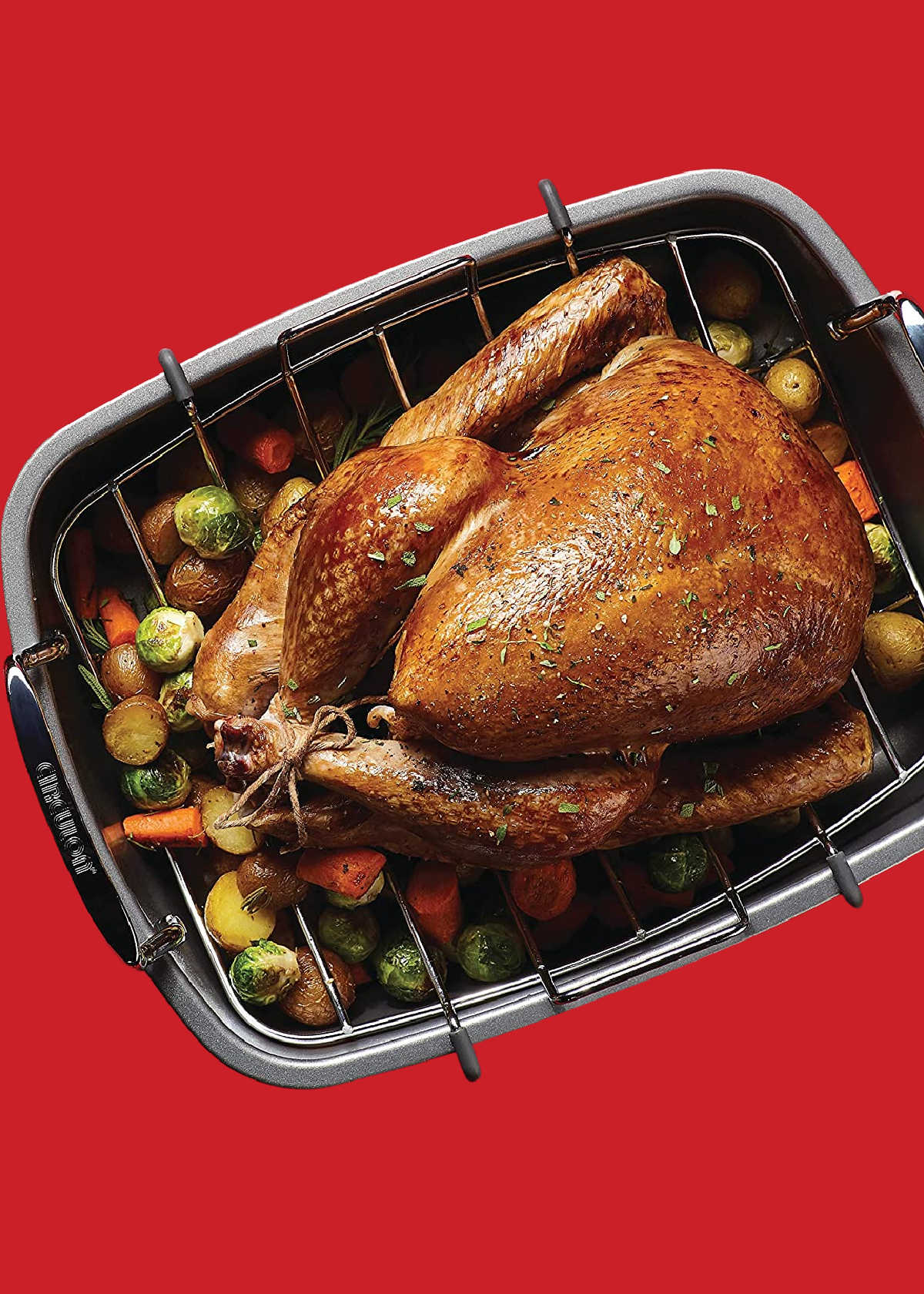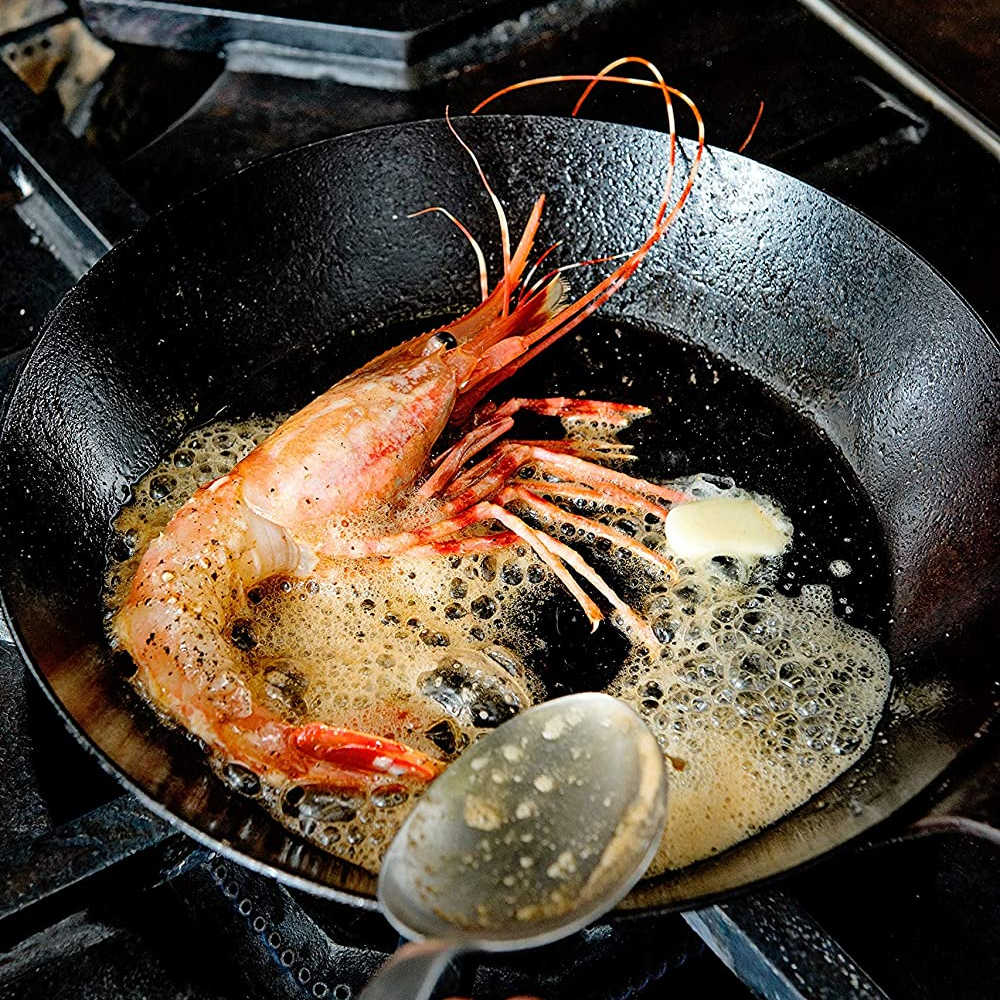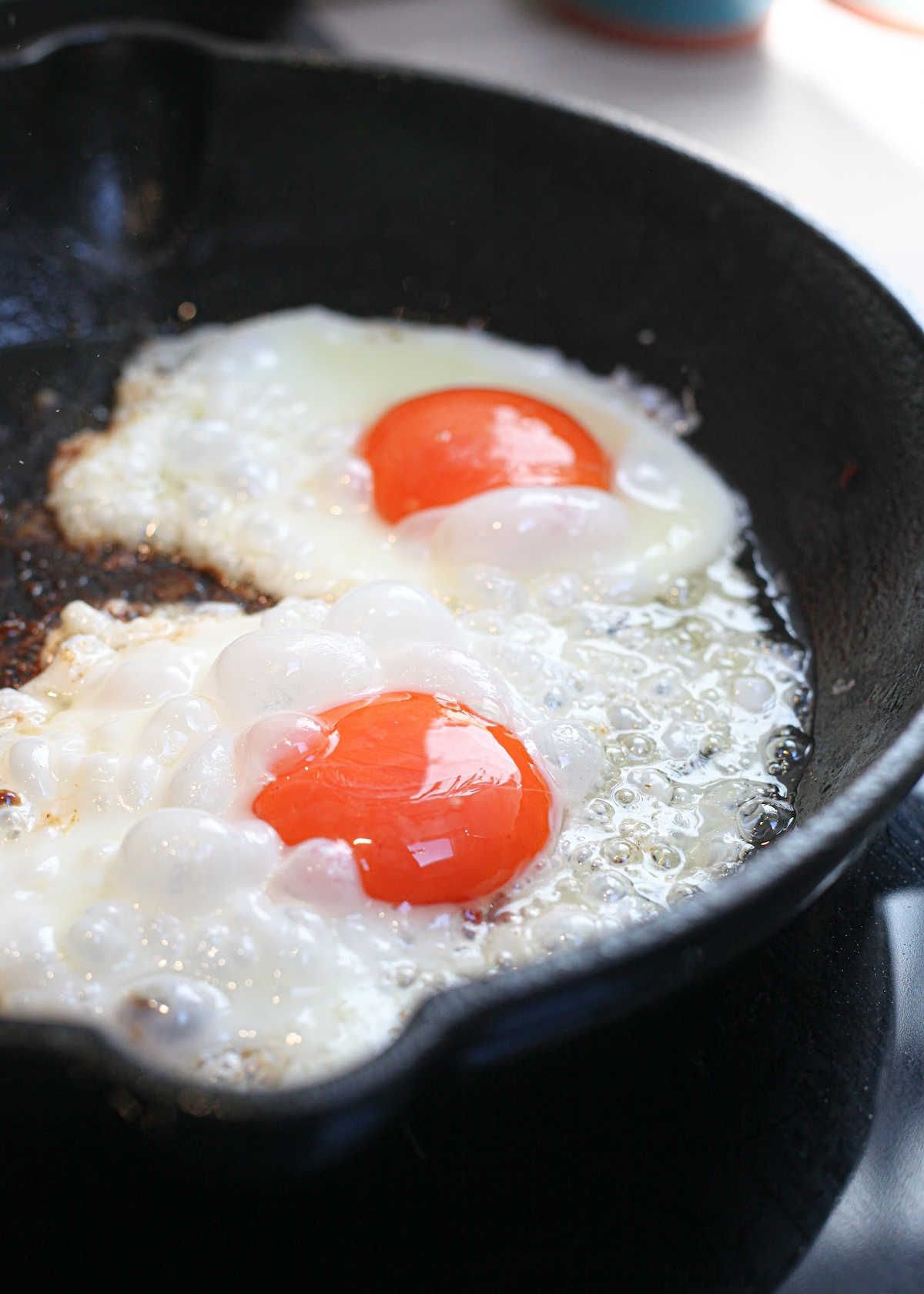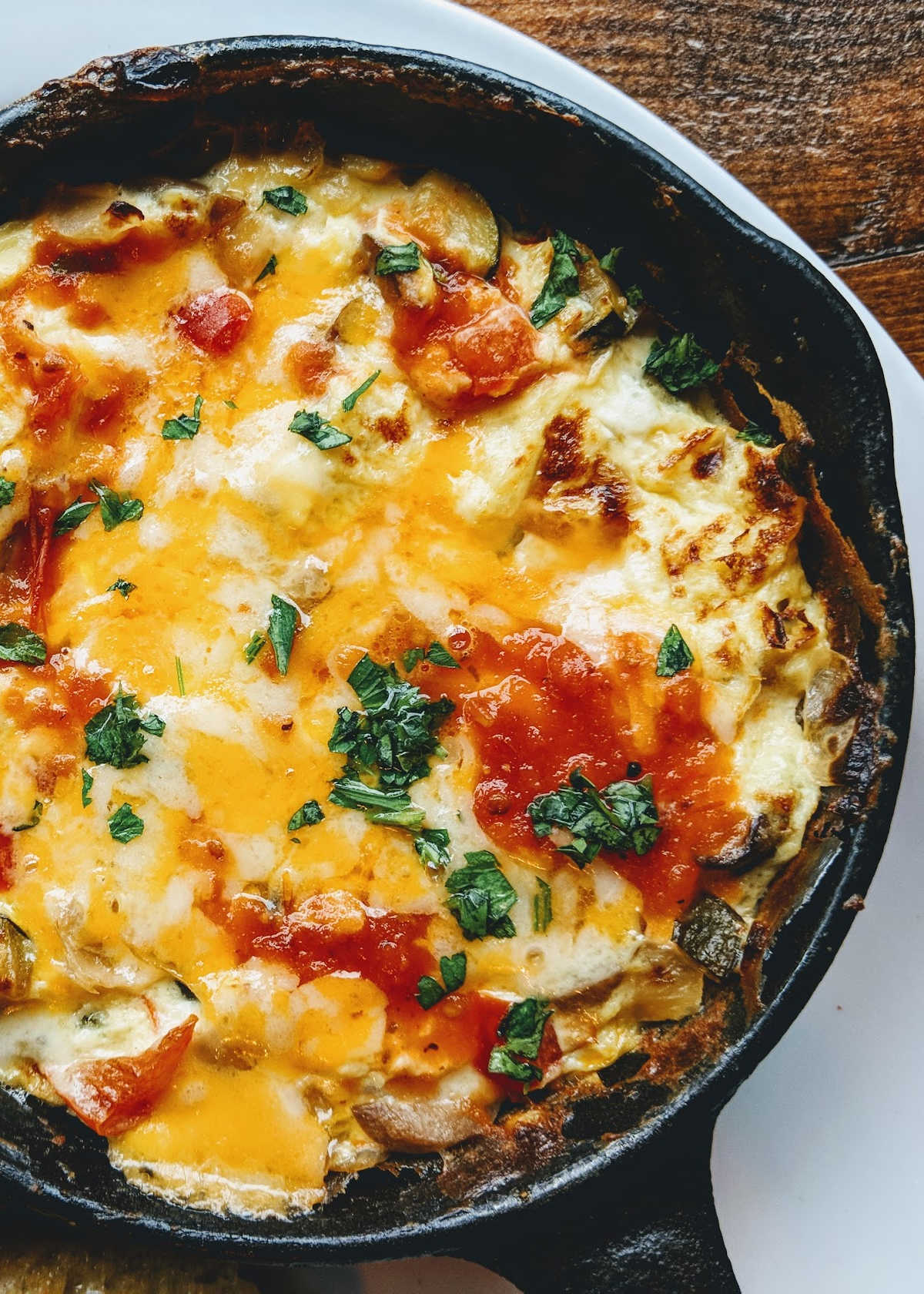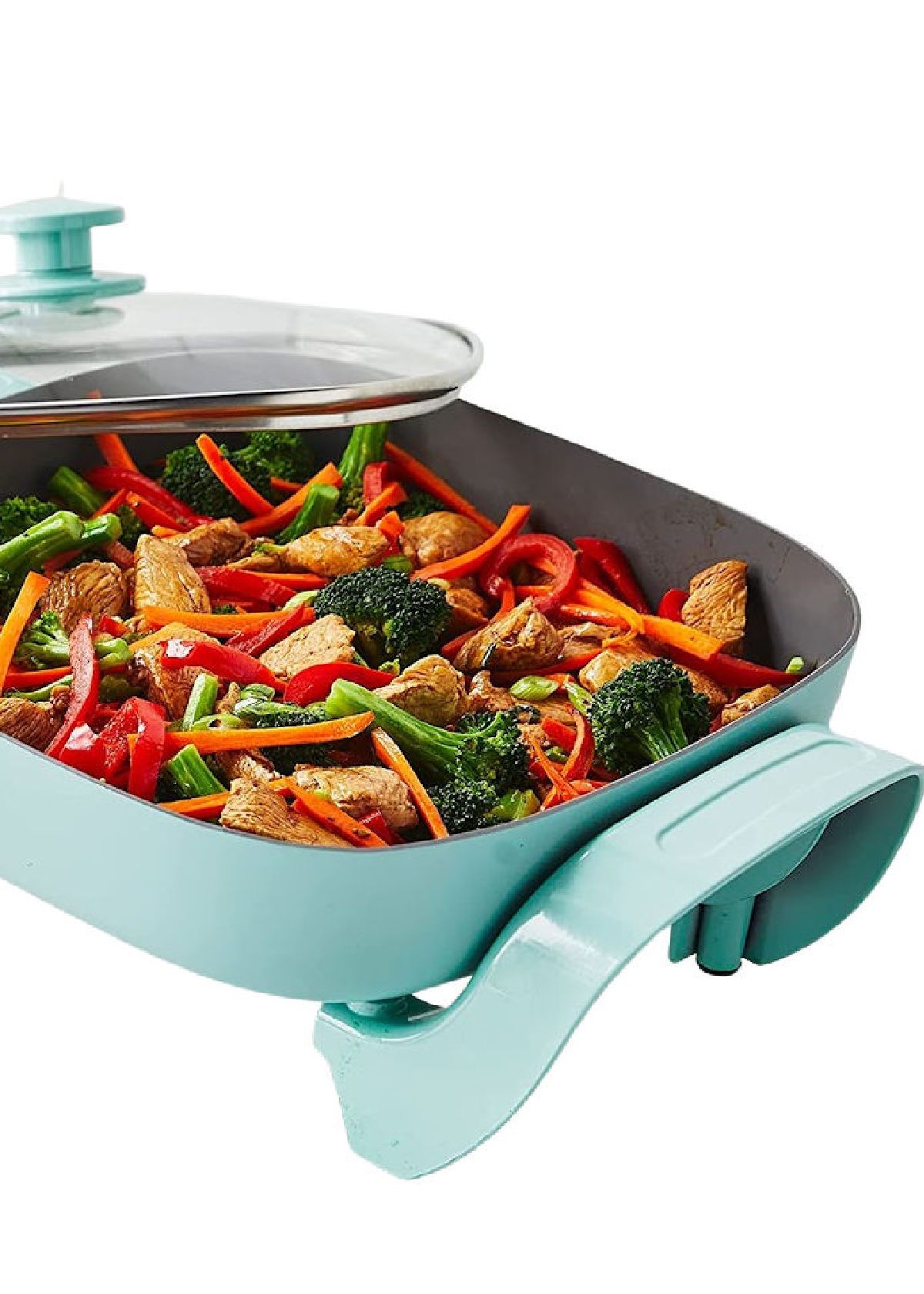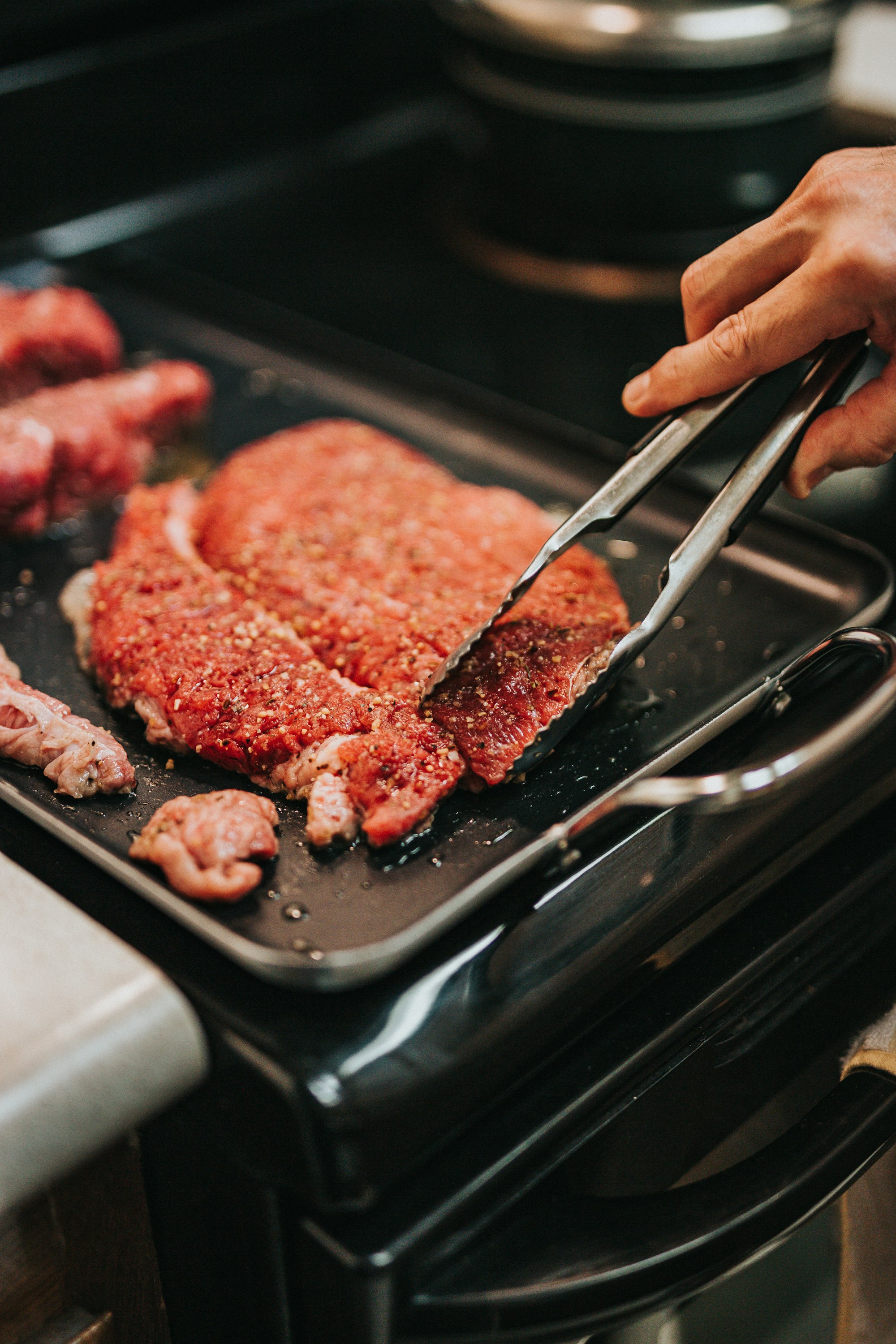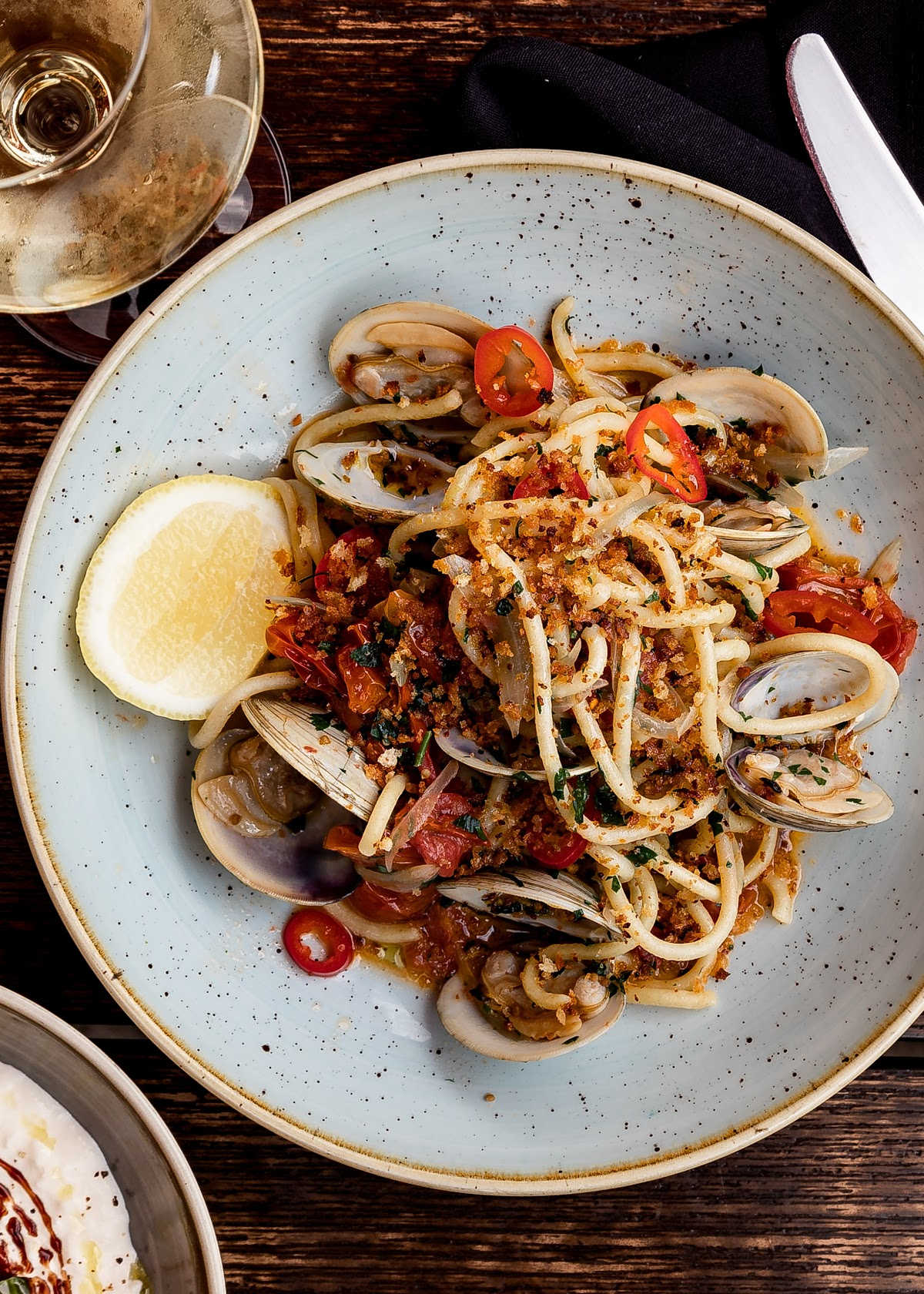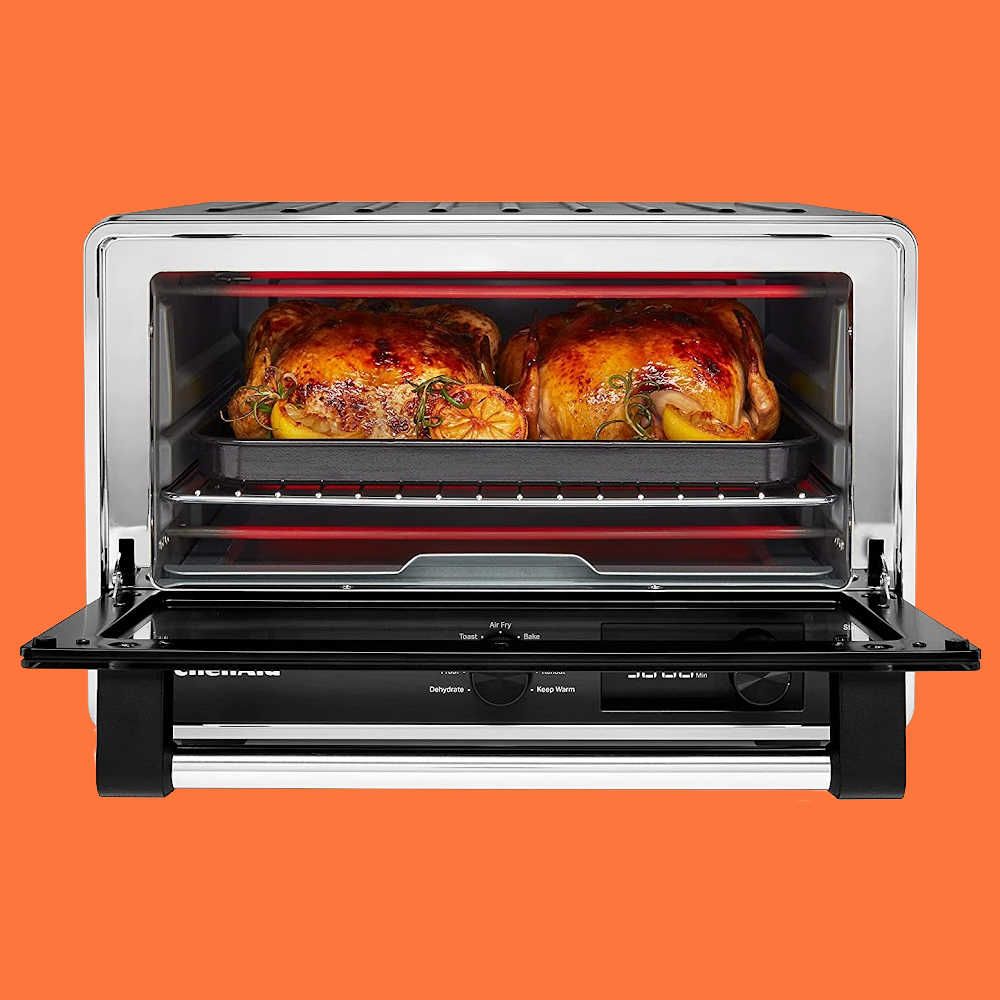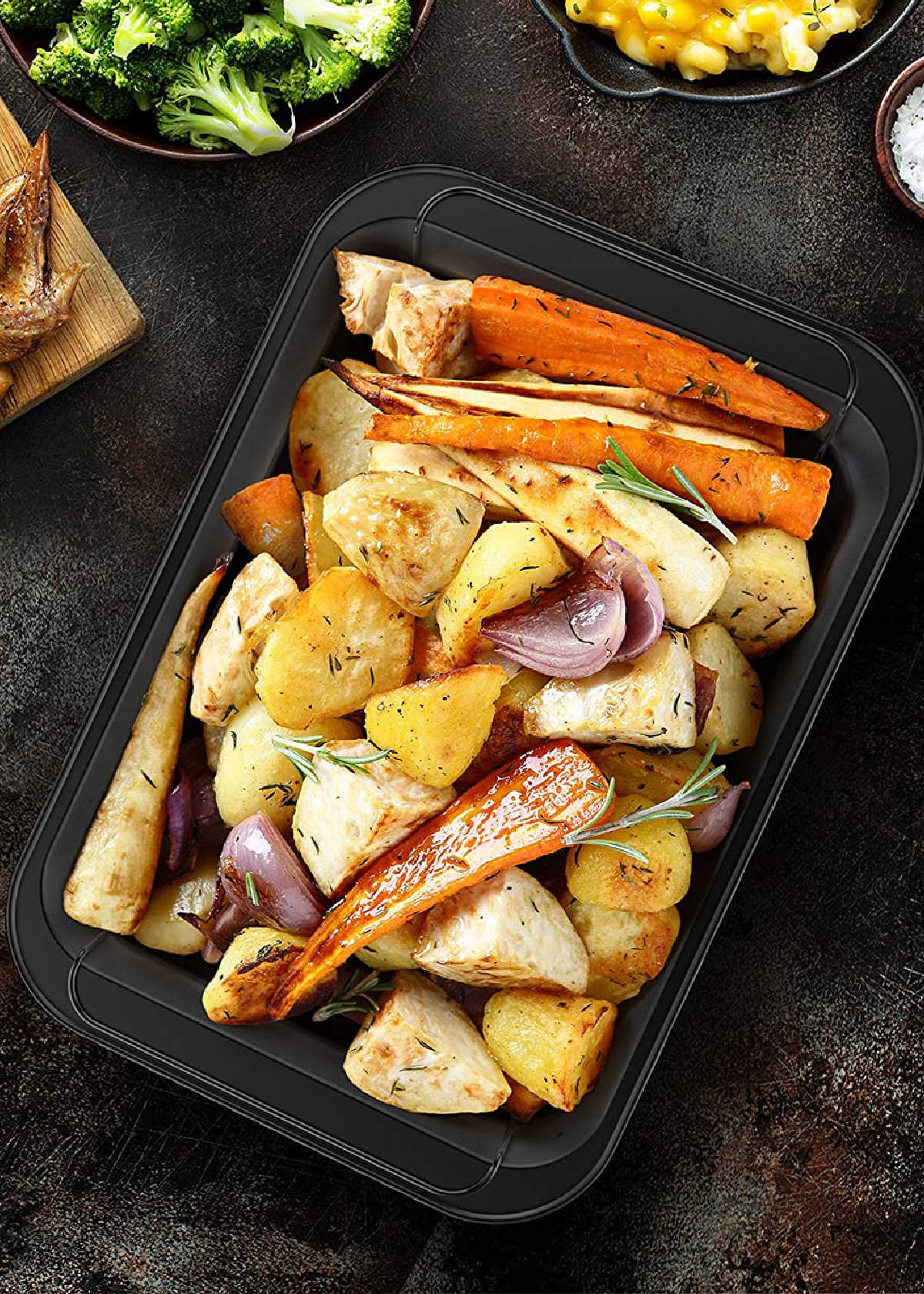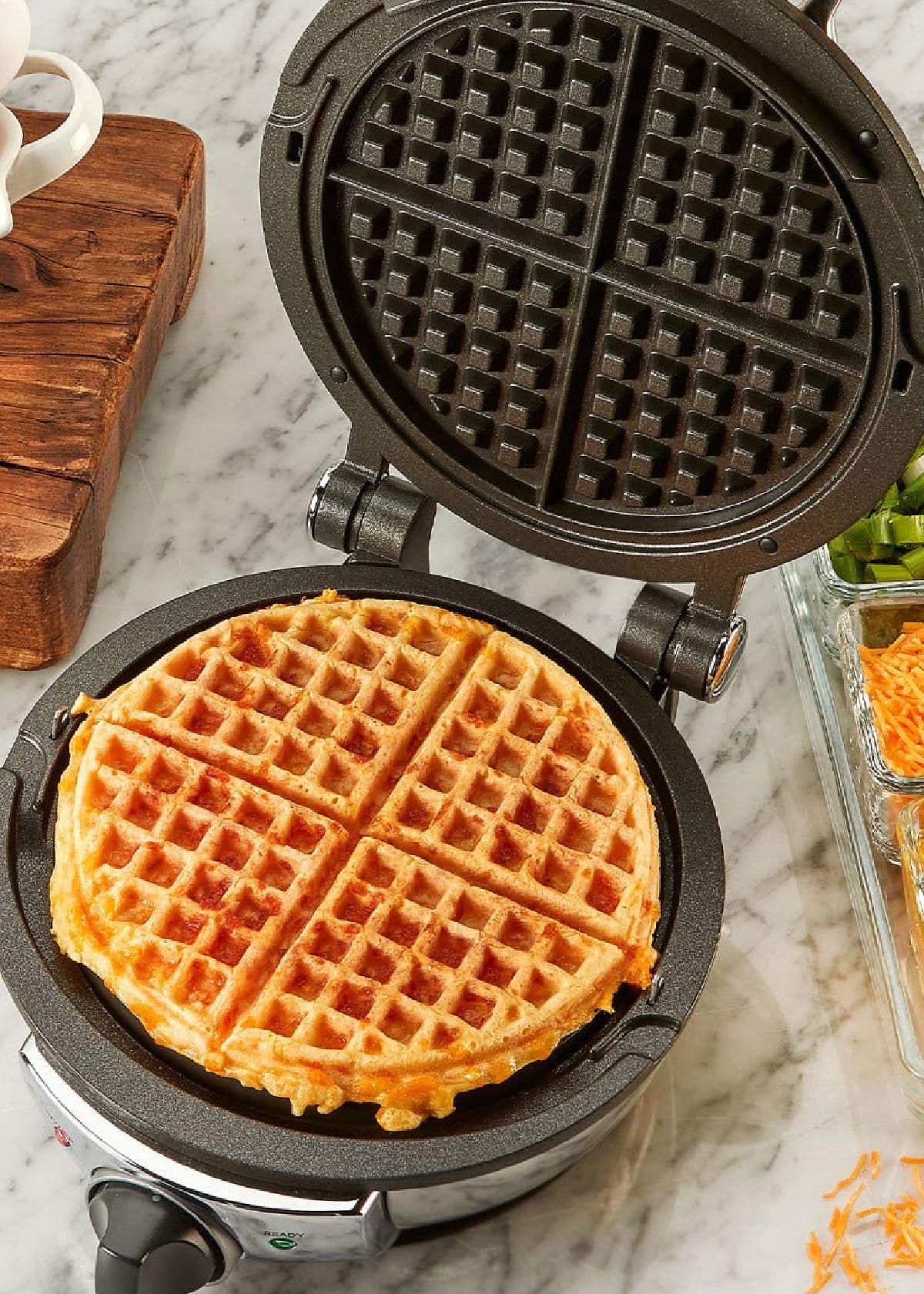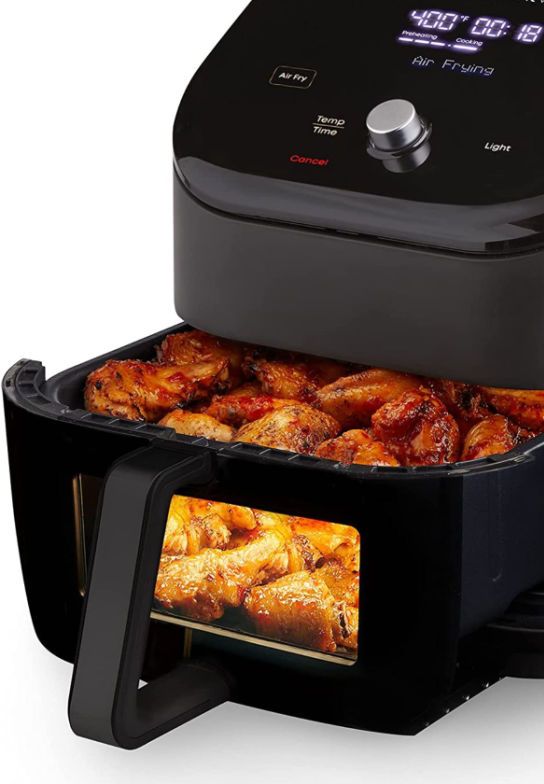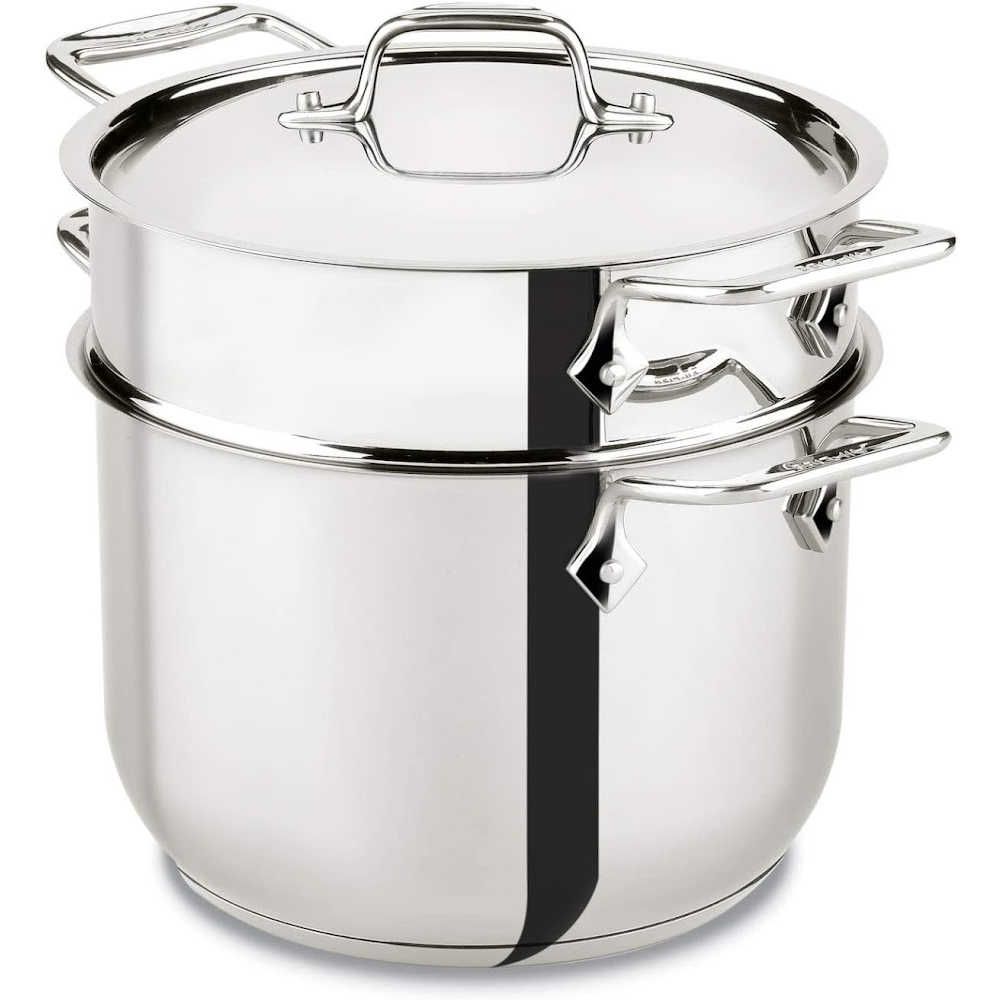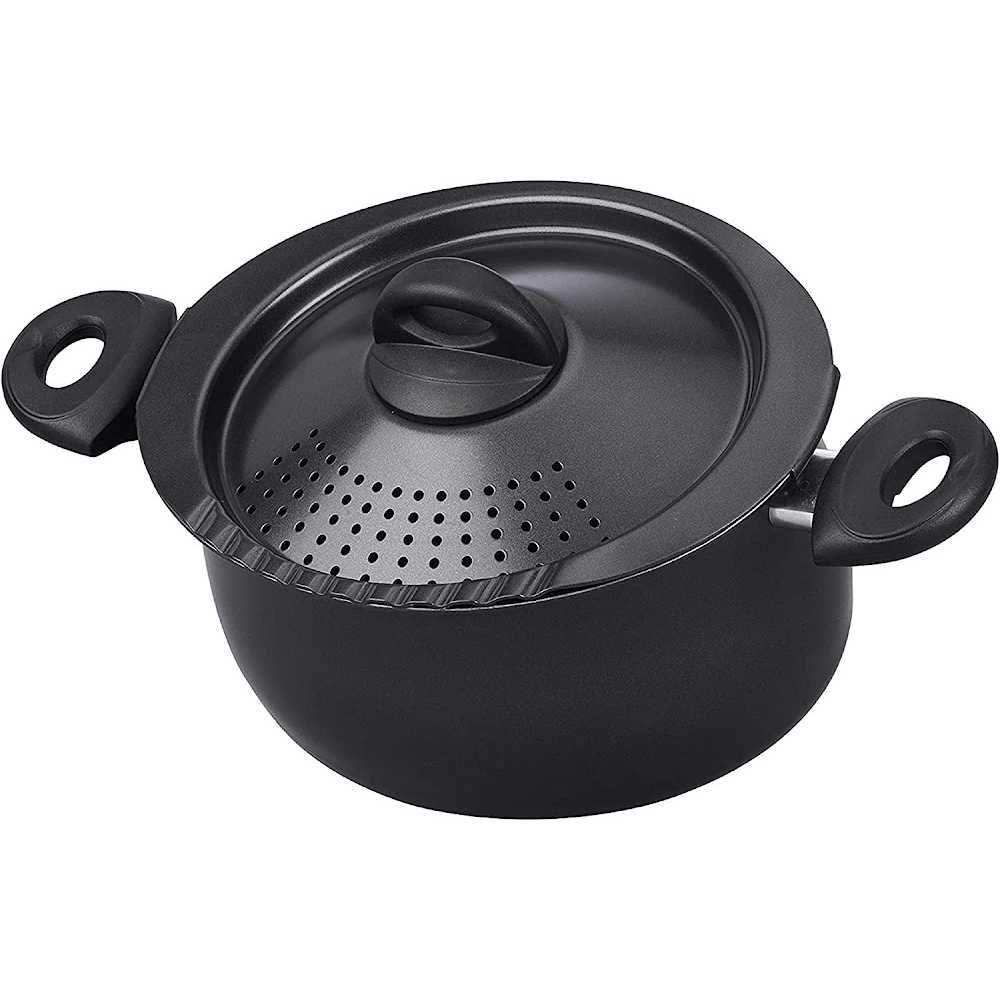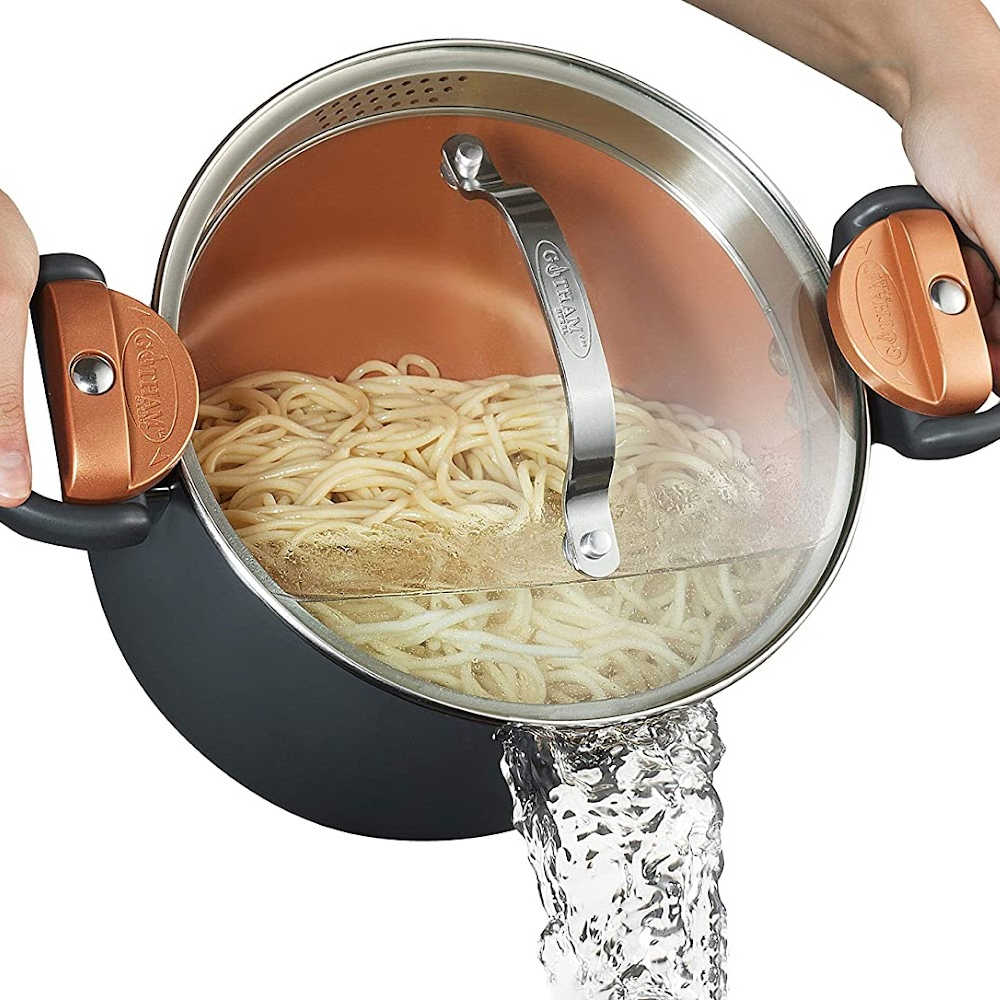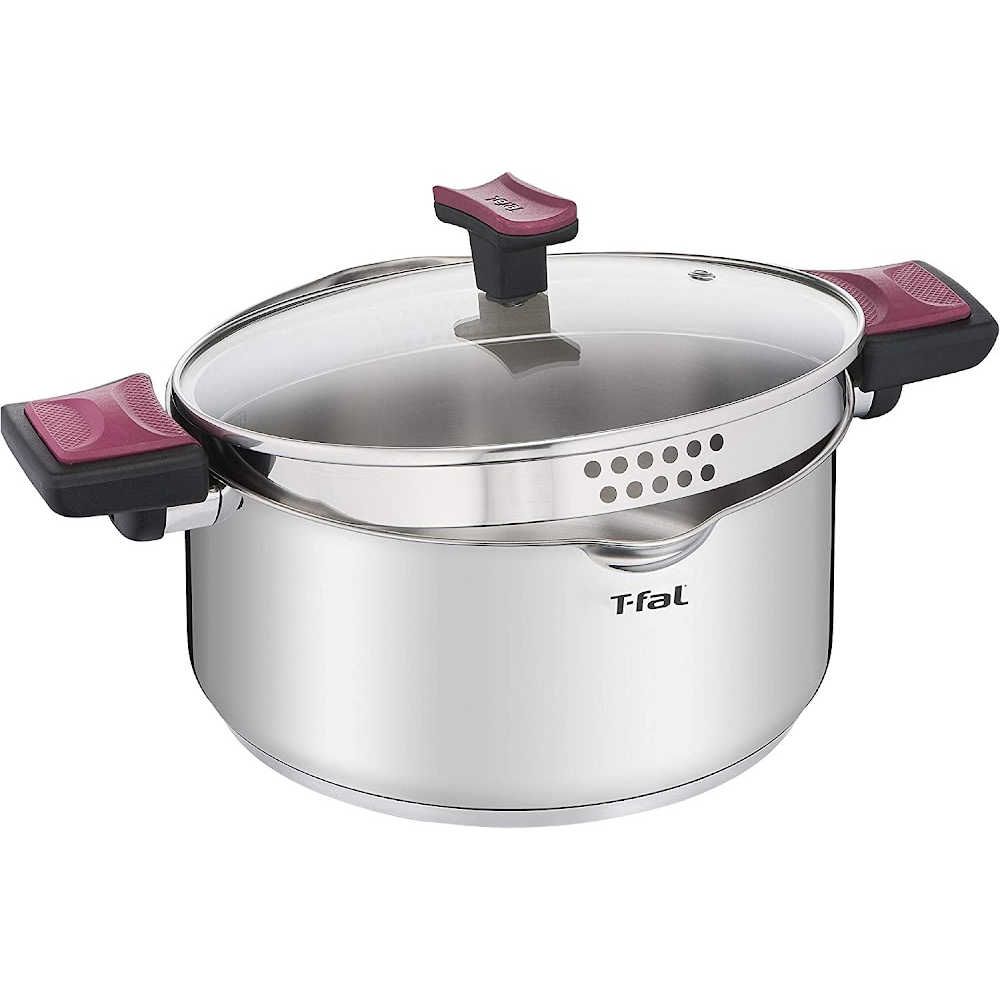Content Summary
If you're looking for the best pasta pot on the market, look no further!
We've done all of the hard work for you and have compiled a list of the best pasta pots available.
Whether you're looking for a stainless steel pasta pot or an enameled one, we've got you covered. Keep reading to find out which pot is best for you!
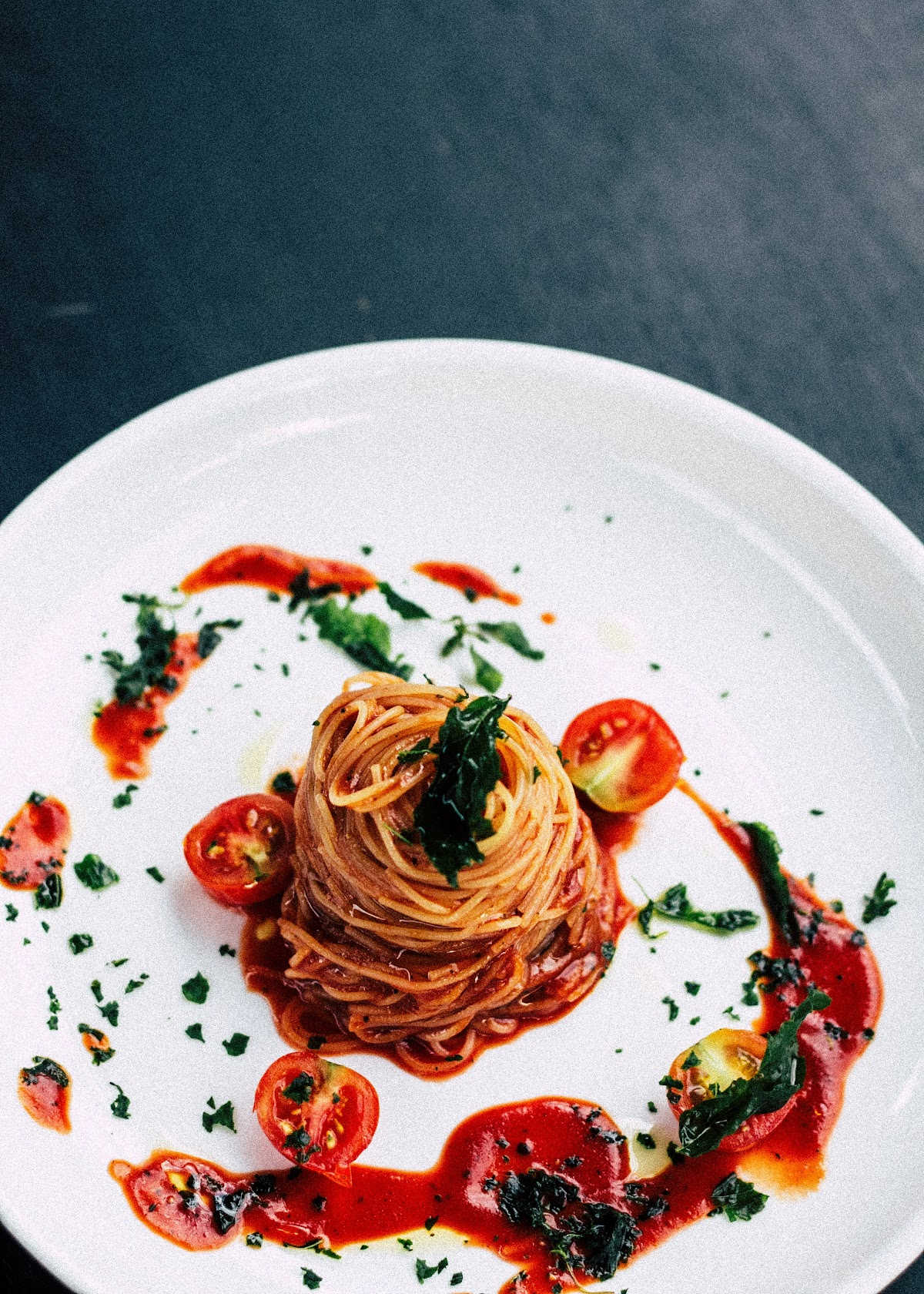
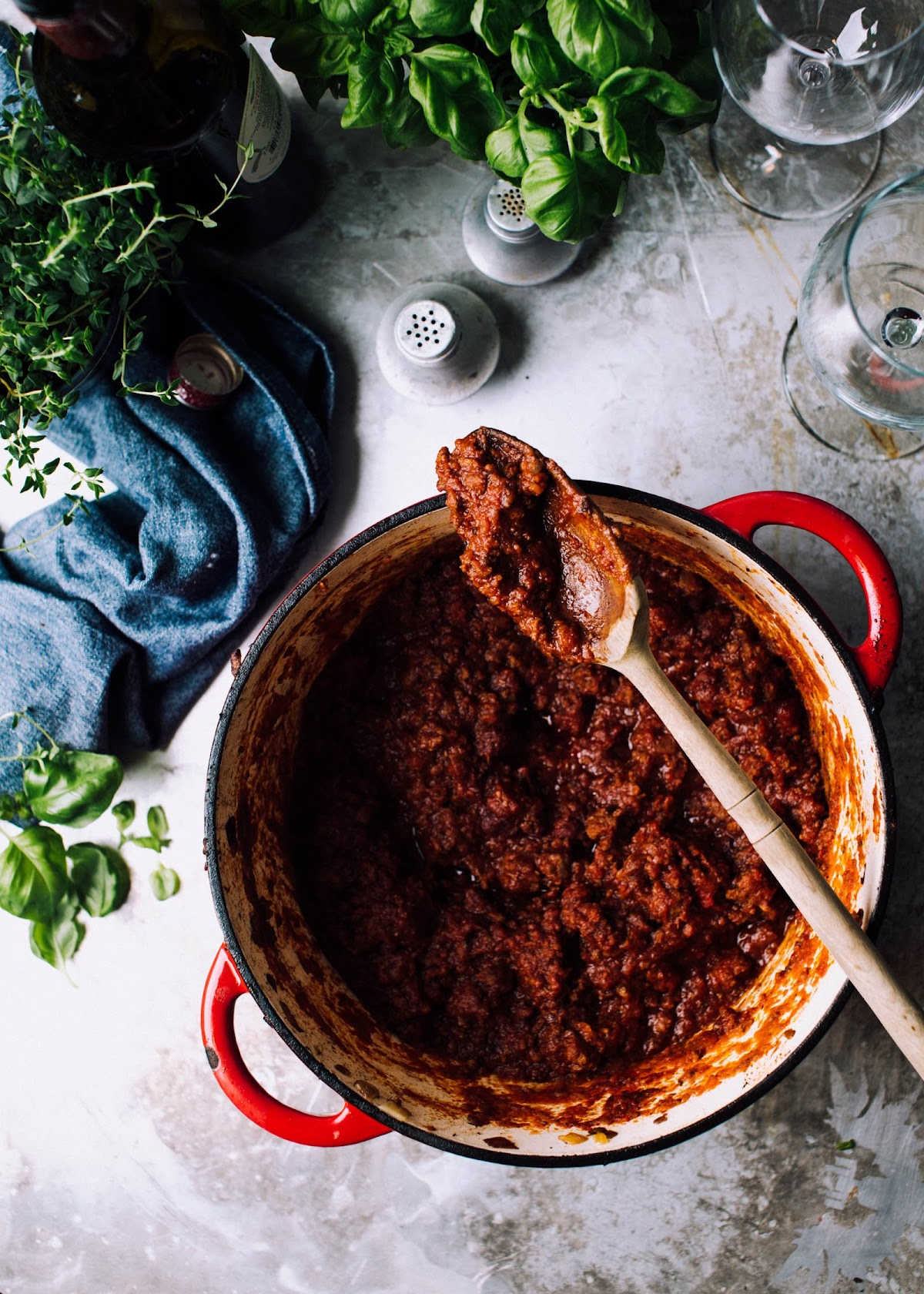
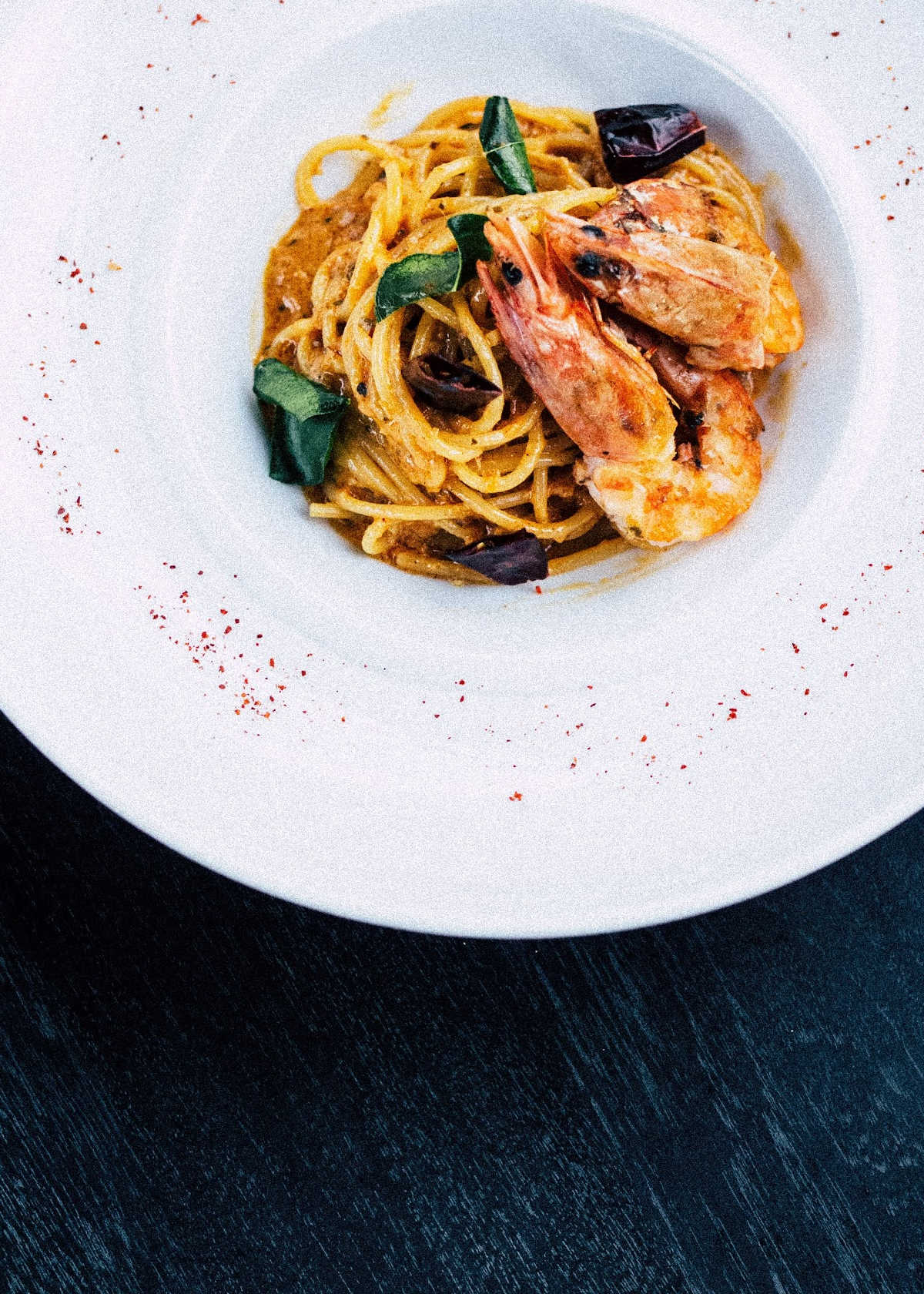
How We Spotlight The Best Pasta Pot
When it comes to selecting and buying pasta pots, there are a few things we keep in mind.
- First and foremost, we want to make sure that the pot is big enough to accommodate a large amount of pasta.
- The material needs to ensure its distributes heat evenly for consistent cooking. Is it made of aluminum, enameled cast iron, or premium grade stainless steel?
- We also want to make sure that the pot has a lid that fits snugly so that the pasta doesn't boil over.
- After boiling, you drain the boiling water and strain the pasta: how do you strain pasta? Does the pot have an all round pouring rim? A pasta insert or a strainer insert (a kind of colander)? Is it a pasta pot with a strainer built in the lid, making it easy to pour pasta in a colander?
- Another thing we consider is how easy the pot is to clean. Dealing with a sticky pot of pasta is the last thing you want to do, so we only recommend pots with a non stick interior and dishwasher safe, making it easy to clean.
- Finally, we take price into consideration. We know that not everyone is willing to spend a lot of money on a pot, so we try to find a balance between quality and price.
- We compare with other pasta pot reviews.
Without further ado, here are the best pasta pots on the market!
Catchy Finds' 4 Picks In The Spotlight




All-Clad Stainless Steel Pasta Pot
What Makes It Catchy
All-Clad's Stainless Steel Pasta Pot with pasta strainer insert is more durable than traditional pots, this pot is designed for a lifetime of use.
The pot features stainless-steel handles and lid, that are permanently secured with stainless-steel rivets.
Plus, it's oven- and broiler-safe to 600 F. Made from single-ply polished stainless steel, its stainless-steel construction with a thick aluminum encapsulated base, guarantees quick, even heat distribution.
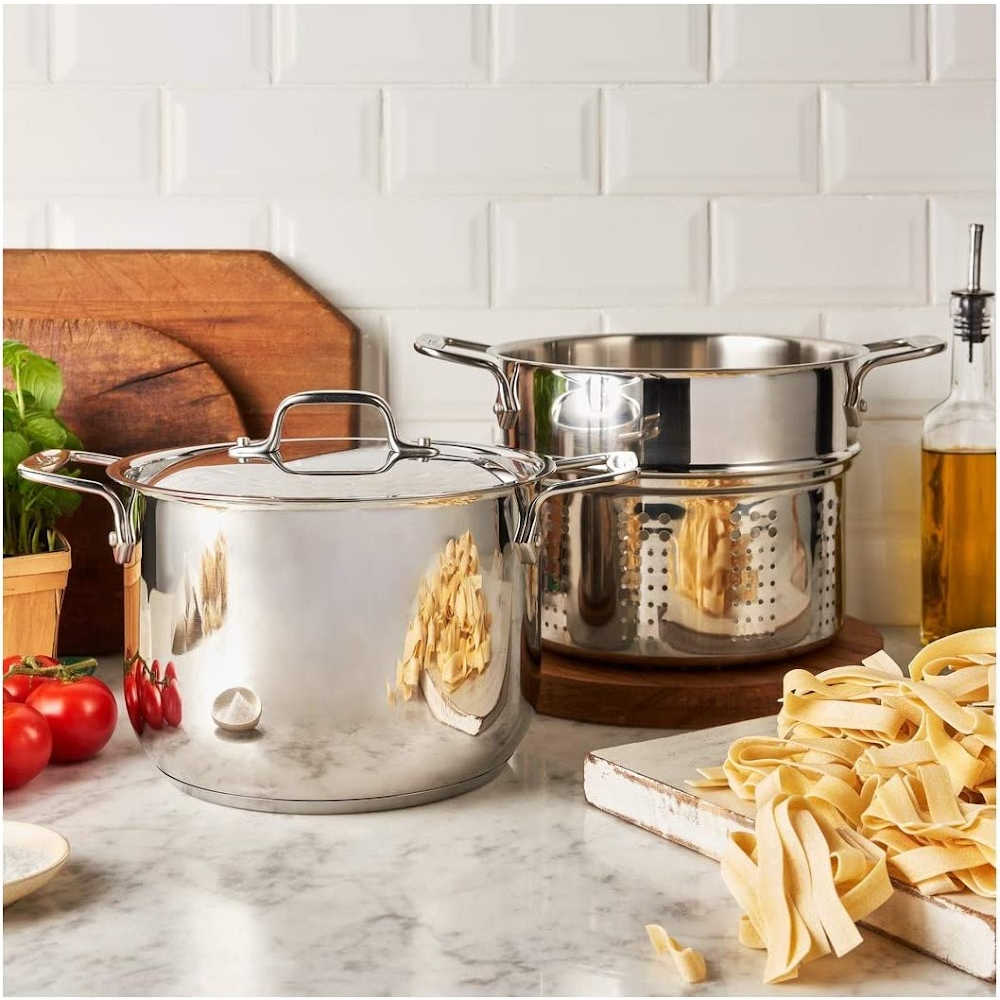
Things In The Spotlight
Its large 6-quart size is perfect for cooking up a batch of pasta for a moderately large group, and the perforated insert: a 4-quart pasta strainer, ensures that your noodles come out perfectly cooked every time.
The real beauty of this pot lies in its versatility. The pasta insert can also be used for straining fruits and vegetables, and the large loop handles make it easy to lift and transport, even when it's full.
It has a high-gloss 10/10 stainless steel cooking surface that is incredibly easy to maintain, dishwasher safe, and provides excellent stick resistance. The All-Clad dedicated pasta pot with its strainer insert stands out among the available stainless steel pasta pots for durability, but also, versatility.
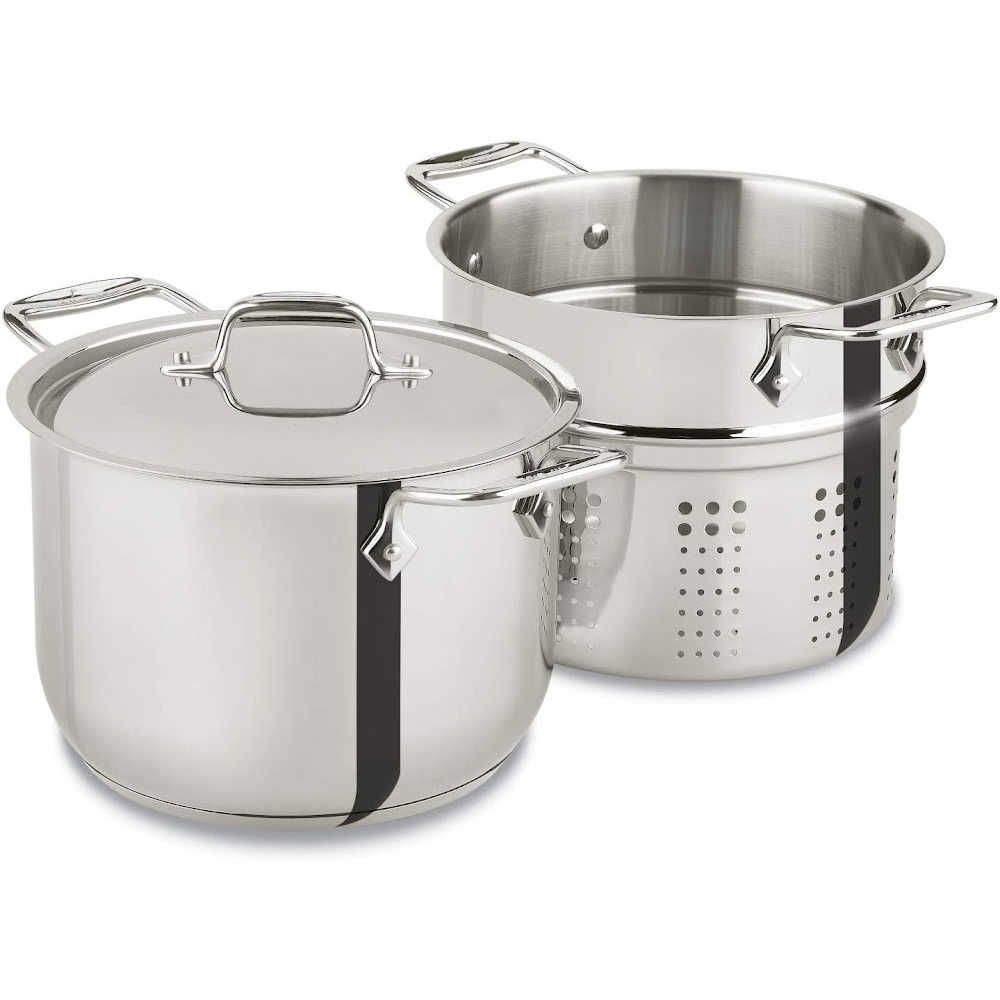
Bialetti Aluminum Oval Pasta Pot
What Makes It Catchy
Do you want an easy way to cook and strain your pasta all in one pot, and avoid breaking when you try to strain them?
Then you need the Bialetti Aluminum Oval Pasta Pot. The oval design of the pot with its strainer lid indicates your noodles won't break when you strain them.
The twist and lock lid is easy to use, so you can cook and strain your pasta without any hassle. This 5.5 quart size pot has a heavy gauge aluminum construction, taking care of even heat distribution. It will last for years.
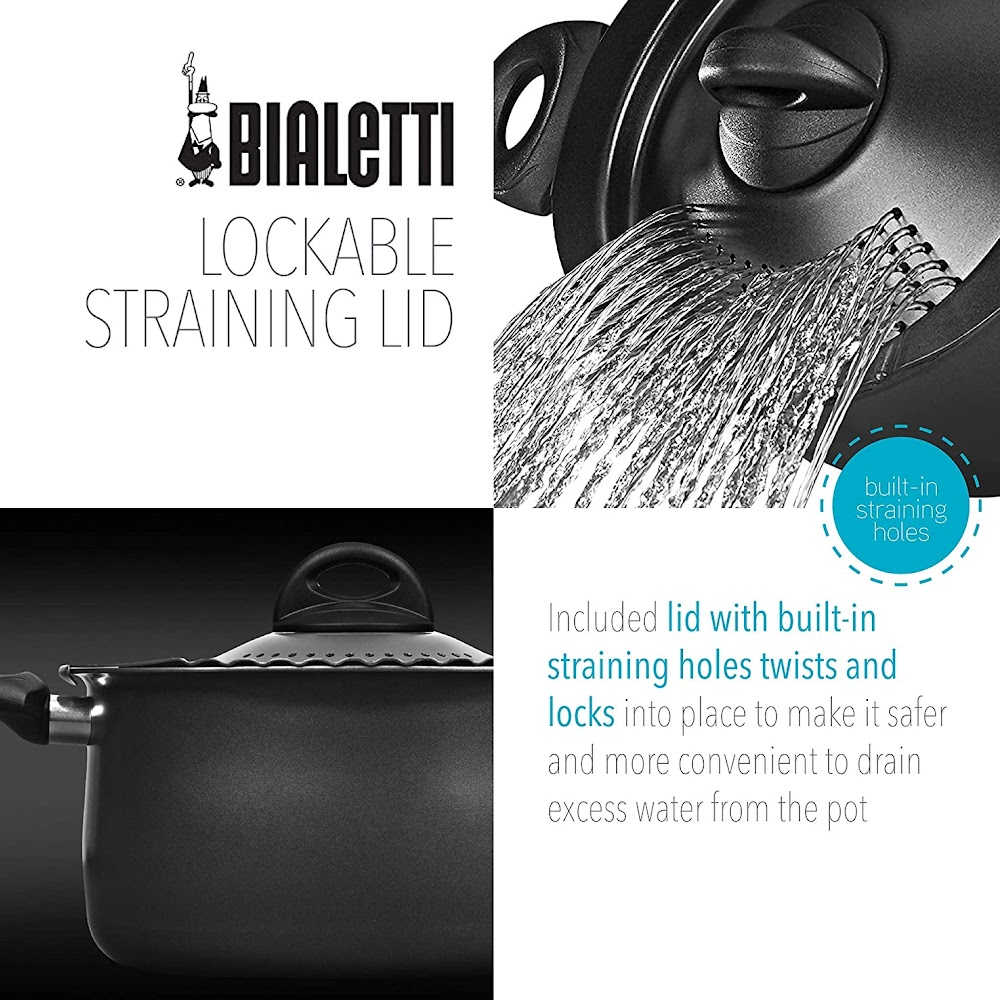
Things In The Spotlight
Aluminum is the way to go when you're looking for a durable and reliable pot or pan. It's one of the most popular materials for cookware because it heats up quickly and evenly, and it's also relatively lightweight.
Aluminum pots and pans usually have a nonstick coating, which makes them easy to clean. They're also generally very affordable. But the supreme test is of course if it can deliver an entire pot of fresh pasta, everytime. The oval Bialetti pasta pot is always up to this task.
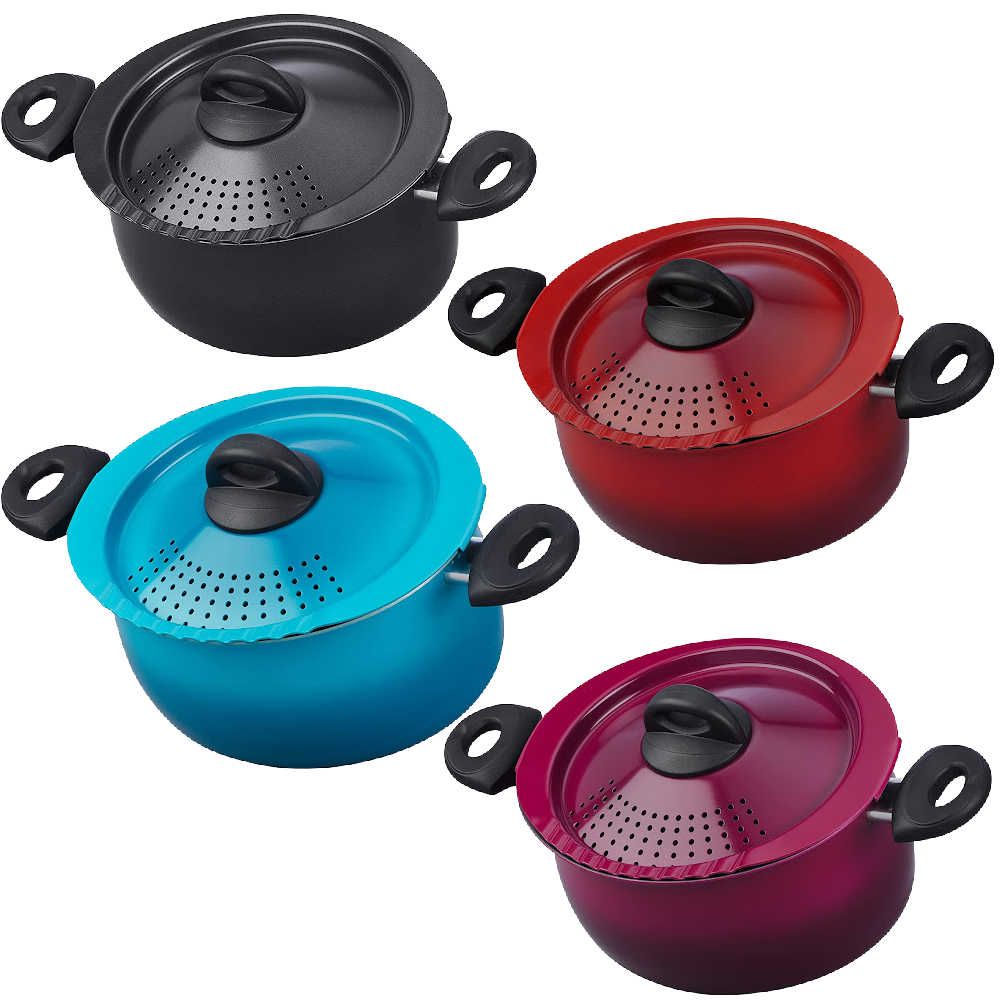
Gotham Aluminum Pasta Pot
What Makes It Catchy
Gotham's aluminum pasta pot is the best choice for its heat distribution and twist and lock handles that allow you to strain out water in seconds - no strainer needed!
Gotham's pasta pot also includes 2 different straining sizes for fine and thicker foods, ensuring nothing slips out while straining.
The Gotham Steel nonstick cooking surface is triple-coated, and then reinforced with diamonds. This allows you to use any cooking utensils, from metal utensils, to an electric beater.
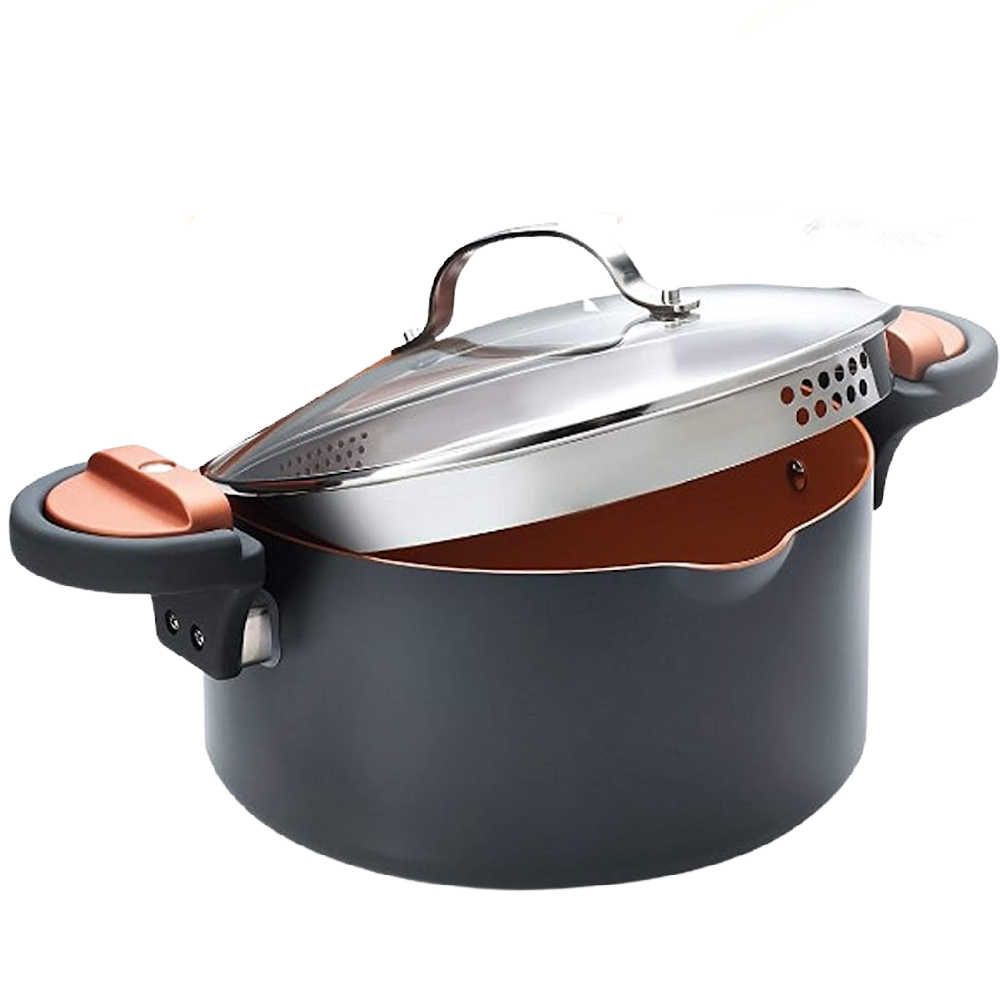
Things In The Spotlight
This 5 quart size multipurpose pot with tempered glass lid is great for pasta, spaghettis and anything else that cooks on the stove!
The pot is designed for all types of foods and can be used with or without a strainer. It is suitable with gas, electric, and glass cooktops. It's also oven safe.
There is no need for seasoning or even oil or butter, resulting in more healthy eating and hassle free usage.
With its convenient and smart design, easy cleanup and affordable price, Could Gotham's pasta pot be the right pasta pot for you? We believe so.
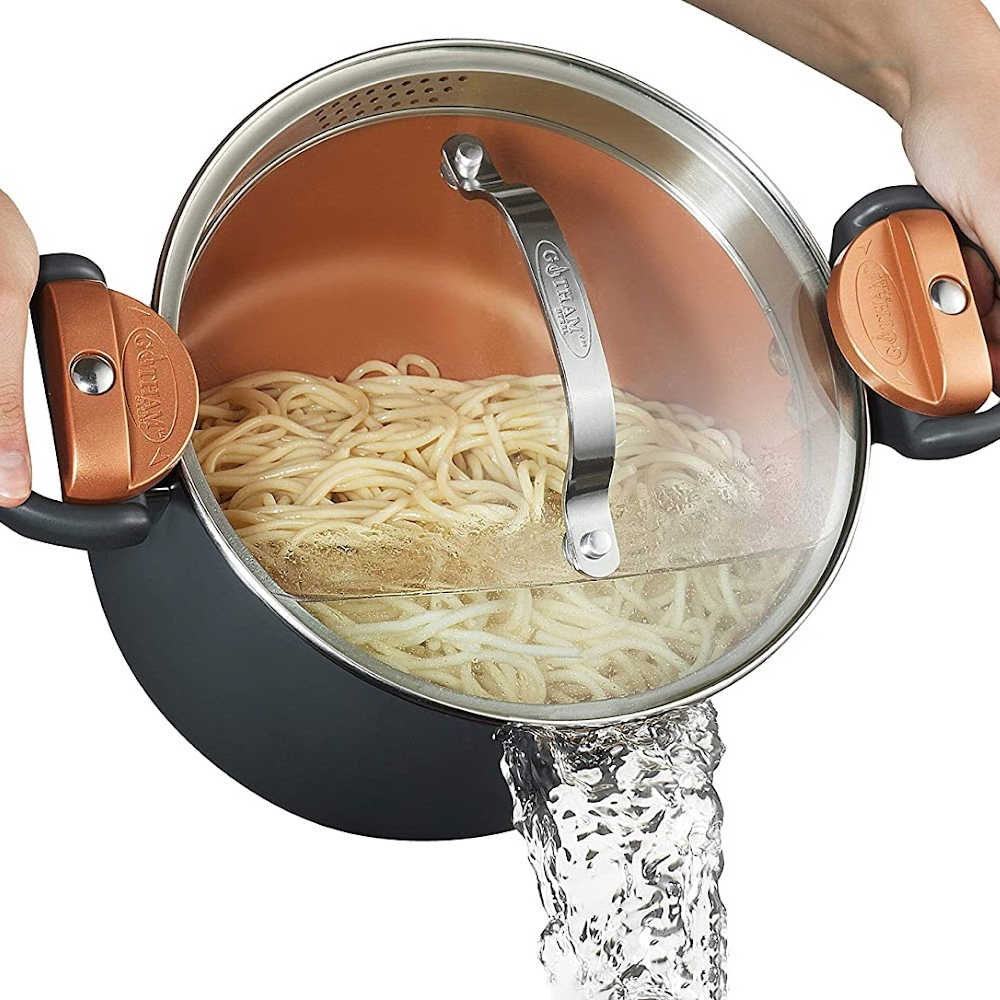
T-fal Stainless Steel Pasta Pot
What Makes It Catchy
T-fal has been a trusted name in stainless steel cookware for years, and their stainless steel pasta pot is a great example of why. The pot is made of high quality stainless steel, which heats evenly and quickly, with no hotspots.
The ergonomic locking handles make it comfortable to grip and keep the pot steady while you're cooking. The ladle holder knob design keeps your countertop clean.
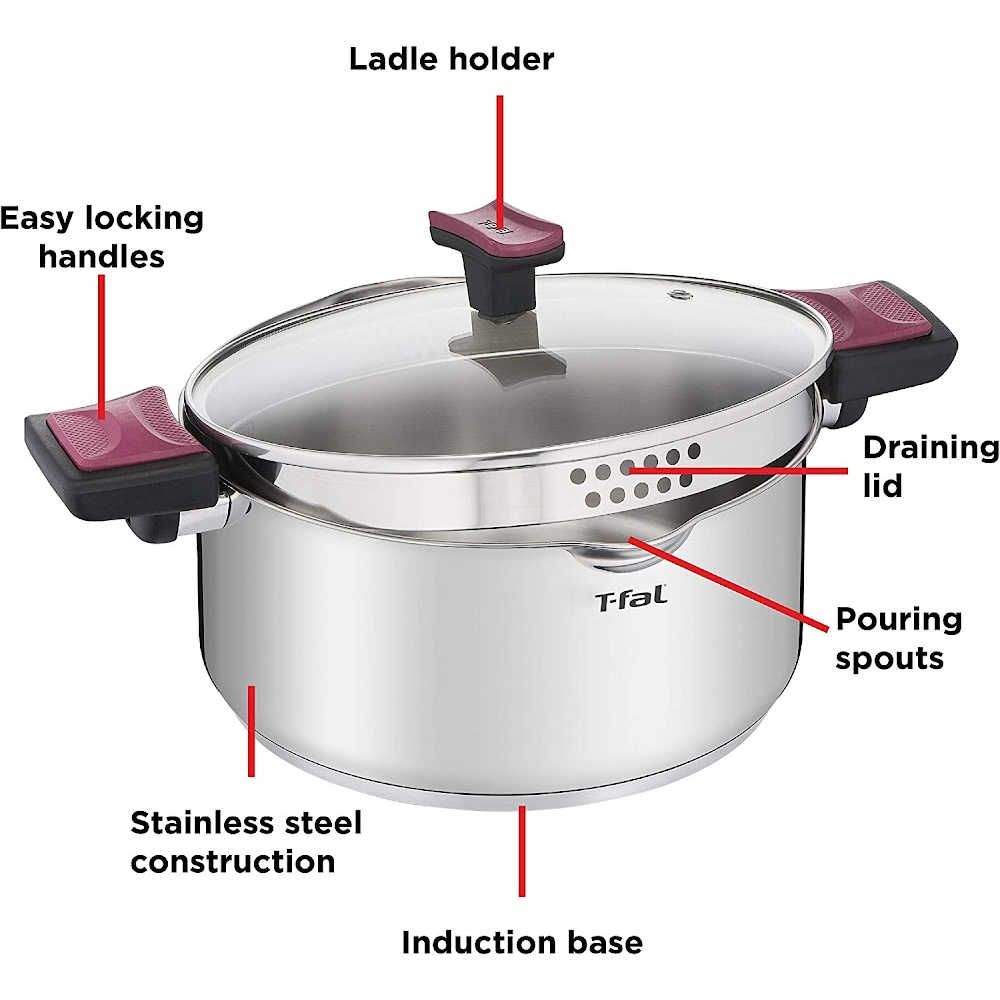
Things In The Spotlight
This 5-quart stainless steel pasta pot (good for 1 pound of uncooked pasta) is compatible with all stove tops, and can be placed in the oven up to 350°F.
Plus, the glass lid features an easy lock and drain strainer system and pour spouts to make draining and serving quick and easy. When you're done, simply place it in the dishwasher for a hassle-free cleanup. A perfect pasta pot!
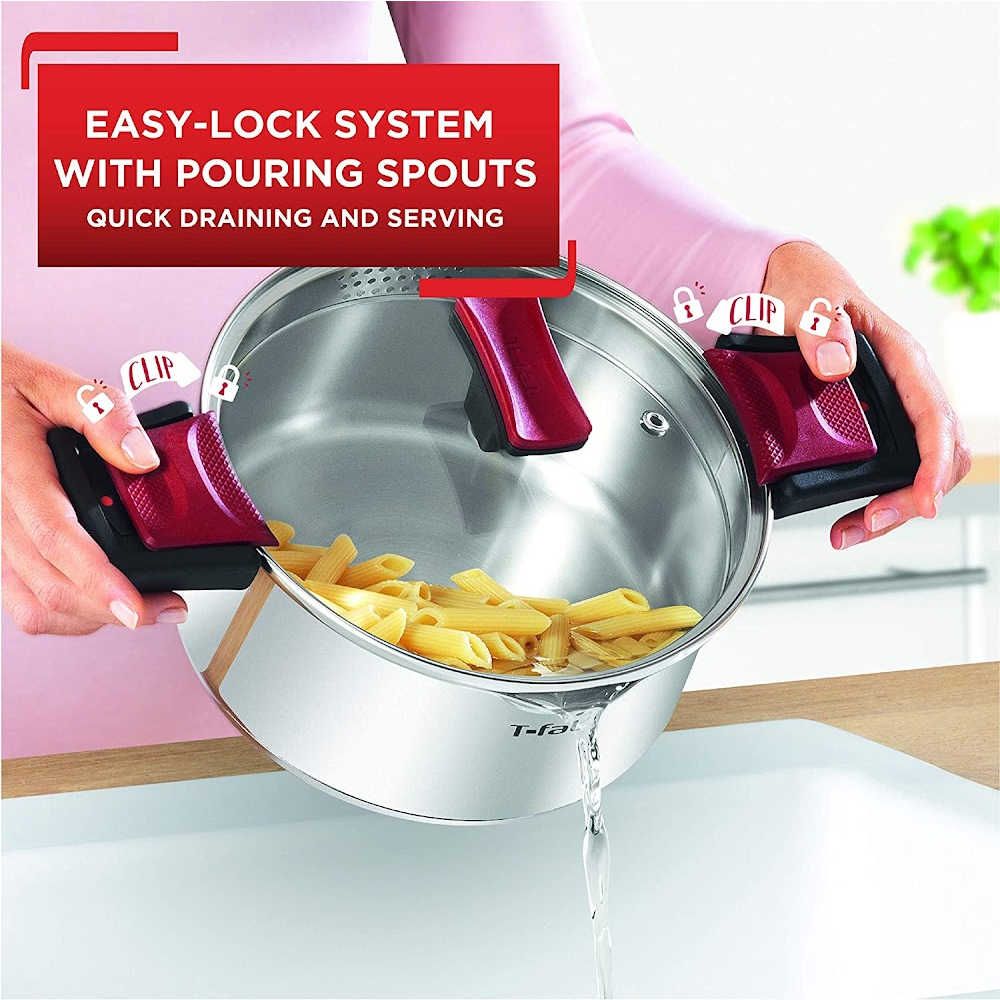
Pasta Pot FAQs
Do you have a pasta pot? If not, are you thinking of getting one? If so, read on for the best pasta cooker FAQs to help make your decision!
What size should I get? What material is the best? What are pot features I should be looking for? How do I cook pasta in it? Do I need a pasta pot with strainer? How about heat distribution? Do I need a pasta insert or also a steam insert? I don't want my pasta stick, how to prevent this? These are all questions people commonly have when considering a pasta pot purchase.
Read on for answers, as well as some tips on how to use your new pot for the perfect pasta every time!
What type of pot is best to cook pasta?
There are a few things to consider when choosing a pot for cooking pasta. The first is the size of the pot. You want a pot that is big enough to fit all the pasta you're planning to cook, plus some water.
Another important consideration is the material the pot is made from. Some people believe that aluminum affects the taste of the pasta. This is a common "chat story", based upon the fact that tomato sauce contains acids which may interact with metal, and influence the later mix with pasta.
Finally, you need to think about how easy the pot is to clean. No one wants to spend hours scrubbing a dirty pot!
The best type of pot for cooking pasta really depends on your individual needs and preferences. If you're looking for a large pot, then something like a stainless steel stock pot would be a good option.
Does aluminum cause a metallic taste?
No, it's based on the unfounded opinion and "chat story" that aluminum causes a metallic taste in pasta. It's true that cooking tomato-based sauce in an aluminum pan leaves a slightly metal taste. Not so with pasta.
They say, if you're concerned about taste, then a stainless steel pot would be a better choice than aluminum. However, stainless steel is really more costly than aluminum. And if you want something that's easy to clean, an enameled pot would be the best option. And, don't believe chat stories.
Are pasta pots worth it?
There are a few factors to consider when answering this question.
First, what type of pasta pot do you mean? A typical pasta pot has a wide bottom and is short in height, which allows for faster boiling of the water and convenient stirring of the pasta. Several come with handy pasta inserts (or strainer inserts.
Celebrity chef Mario Batali recommends using a 12-quart pot for 2 pounds of pasta, so it's definitely big enough for most households. (This size would even manage 4 pounds, but then again, we're not Chef Mario ...)
If you're looking for a pot specifically designed to make pasta, then the answer is yes, they are worth it. But if you just want a regular pot that can do the job, there's no need to spend extra money on one. In fact, I usually use my Dutch oven or stock pot for cooking tasty pasta.
How about the Evernew Titanium Pasta Pot?
This is an affordable much-loved, light, titanium pasta pot with a strainer lid from Japan. It comes in different sizes. The medium size is very popular with campers, bachelors and young couples. However, its availability is sometimes difficult.
How big of a pasta pot do I need?
You'll need a big pot for pasta-making! At least 4 quarts, and ideally 6 quarts. The pot should be wide enough to fit a whole box of pasta, and it should have a tight fitting lid. Personally, I'd go for a 12 quart. Plenty space for 3, even 4 pounds.
Can I use my pasta pot for other purposes?
Yes, you can. If you' want to use the pasta insert as a steamer basket, be my guest. Make sure it's big enough to accommodate whatever else you're cooking.
To ensure everything runs as it should be, I'd make sure it has a stainless steel construction for even heat distribution, or at least, thick aluminum, a pasta insert and a strainer lid, a tempered glass lid, the whole thing dishwasher safe, and generally, to be a member of the class of best pasta pots ever produced.
What is the difference between a stock pot and a pasta pot?
A pasta pot is designed specifically for cooking pasta, while a stock pot can be used for a variety of purposes, including making stocks or soups.
A pasta pot has a wide bottom that allows the pasta to spread out and cook evenly, while a stock pot typically has a narrower bottom so that it can be used to brown meat or vegetables before adding liquids.
Additionally, several pasta pots come with a built-in colander that can be used to drain the cooked pasta directly into the pot, whereas a stockpot will not have this feature.
Can you use a Dutch oven for pasta?
Yes, you can use a Dutch oven for pasta. In fact, it's a great way to cook pasta because the pot will retain heat and the moisture so that the pasta cooks evenly and doesn't stick to the pot.
Plus, the Dutch oven can go from stovetop to oven so you can brown your meat or vegetables before adding the sauce and cooking everything all together.
Can I use a pasta pot as a steamer?
If you have a minimum 6-9 quart pasta pot with a strainer insert (or for example, a stainless steel rim), you can. Boiling water produces steam. The perforated insert can be used as a (deep) steamer insert or steamer basket. Whether you want to steam seafood or vegetables, no problem!
What is the best pot to cook spaghetti sauce in?
There is no one "best" pot to cook spaghetti sauce in, as there are many different types of pots that can be used for this purpose.
While some home cooks may prefer to use a traditional pasta pot, others may opt for a Dutch oven or even a slow cooker. I'd avoid aluminum, as it may leave a metallic taste. Ultimately, it is up to the individual cook to choose the pot that best suits their needs and preferences.
That said, there are a few things to keep in mind when choosing a pot for cooking spaghetti sauce.
- Firstly, the pot should be large enough to accommodate the amount of sauce you plan on making.
- Secondly, the pot should have a heavy bottom in order to prevent scorching.
- Lastly, if you want your sauce to develop deep flavor, choose a pot that can be used on the stovetop and in the oven.
Can you boil pasta in a stainless steel pot?
Yes, you can prepare pasta in a stainless steel pot. Stainless steel is a durable and versatile material that can be used for many different purposes, including cooking.
While you may not want to use a stainless steel pot for making pasta every day, it can be a perfectly good option if you're in a pinch.
The main thing to keep in mind is that stainless steel pots tend to conduct heat more quickly than other types of pots, so you'll need to adjust your cooking time accordingly.
Overall, preparing pasta in a stainless steel pot is perfectly safe and can be a great option if you're looking for an alternative to using a traditional pasta pot.
Can you cook pasta in an aluminum pot?
Yes. However, some argue that aluminum gives pasta a metallic taste. However, this is not due to the pasta, but to the acid in the tomato sauce. Acid reacts with the metal giving the pasta a metallic taste.
So if you just cook the sauce in a separate, stainless steel pan or an enameled cast iron pot, there is no reason not to cook in an aluminum pot.
Can I cook pasta in a stock pot?
Absolutely! A stock pot is the perfect vessel for cooking pasta. It's large and deep, so it can accommodate a lot of water and pasta. Plus, the wide base ensures that the pasta will cook evenly.
Here's how to make pasta in a stock pot:
1. Fill the pot with water and bring it to a boil.
2. Add salt to the water, then add the pasta.
3. Cook the pasta according to package directions.
4. Drain the cooked pasta in a colander and serve with your favorite sauce or seasonings.
What cookware does Gordon Ramsay use to cook pasta?
Gordon Ramsay is one of the world's most renowned chefs, and he knows a thing or two about pasta. He typically uses a short, wide pasta pot to cook his dishes.
This allows the pasta to cook evenly and prevents it from sticking. He also frequently uses a colander to drain the cooked pasta.
If you're looking for the best pasta pot, it's worth considering one that is similar to the type of pot that Gordon Ramsay uses.
Why does Gordon Ramsay add oil to pasta?
Adding oil to pasta helps to loosen the starch granules so that they don't stick together and form clumps. This results in a smoother sauce and also prevents the pasta from sticking to the pot or pan.
Oil also helps to coat the pasta with a layer of protection, which prevents it from absorbing too much sauce and becoming gummy or sticky.
Some chefs also believe that adding oil makes the pasta taste better, because it enhances the flavor of the ingredients.
Why do Italians put oil in pasta water?
If you've ever been to Italy, or even watched an Italian cooking show, you might have noticed that the chefs always add a bit of oil to the water when they're boiling pasta. This might seem like a strange habit, but there's actually a very good reason for it!
Adding oil to pasta water prevents the noodles from sticking together and makes them easier to pair with sauce. It also helps to preserve the shape of the pasta so that it doesn't become mushy.
So next time you're making pasta at home, remember to add a little bit of oil to the water before you start boiling!
Should you add salt to water when boiling pasta?
The general consensus amongst experts is that you should not add salt to the water when cooking pasta. The reasoning behind this is that the salt will make the pasta tough and rubbery.
Additionally, adding salt to the water can make it difficult for the sauce to stick to the pasta. Still, a little salt will do no harm.
What are the five mistakes to avoid when making a pasta salad?
1. Not using a dressing: A good dressing will not only add flavor but will help keep the pasta salad from becoming dry.
2. Using mayo as the main ingredient in the dressing: Mayo is very high in fat and calories, so it's not the best choice if you're trying to watch your weight.
3. Using store-bought croutons: These are often high in fat and sodium. Instead, make your own croutons by cutting up whole-grain bread into small cubes and baking them in the oven until crispy.
4. Adding too much cheese: Cheese is another food that is high in fat and calories, so limiting your intake is a good idea if you're trying to watch your weight. Instead of adding a lot of cheese, try using a sprinkle of Parmesan or another type of cheese that has a strong flavor.
5. Adding too many high-fat ingredients: Foods like bacon, sausage, and ham should be used sparingly in pasta salad. Instead, focus on adding lots of fresh vegetables for a healthier dish.
If you're looking for a delicious and healthy pasta salad recipe, be sure to avoid these five common mistakes! With a few simple swaps, you can turn an ordinary pasta salad into a truly extraordinary dish.
Should you put butter on pasta?
If you have a heartier pasta, like one with a lot of whole wheat flour in it, then I would recommend using olive oil or another heart-healthy oil instead of butter.
Should I put olive oil in my pasta water?
Adding olive oil to your pasta water is not necessary, but it can help keep the noodles from sticking together. It also adds a bit of flavor to the pasta. If you're using a lot of olive oil in your sauce, you may not want to add it to the water as well - or just a tiny bit.
How do you boil pasta for a crowd?
The key to cooking pasta for a crowd is using a large pot and making sure the water is boiling before adding the pasta.
Add enough water to the pot so that the pasta will be covered by at least 1 inch of water. Bring the water to a boil, then add the pasta.
Cook the pasta according to package directions, stirring occasionally. When the pasta is cooked al dente, drain it in a colander. Pour 1/2 cup of olive oil or melted butter over the top of the pasta and toss until all of the pasta is coated. Serve immediately with grated Parmesan cheese on top.
How do you cook a large batch of pasta?
The best way to cook a large batch of pasta is to use a 10-12 quart pasta cooker or pasta pot. This kitchen appliance makes it quick and easy to cook a large pot of pasta, and it also keeps the noodles from sticking together.
Can you use a regular pot to prepare a large batch of pasta?
If you don't have a pasta cooker, you can still cook a large batch of pasta by using a regular pot. Just make sure to bring the water to a rolling boil before adding the noodles, and then stir frequently to prevent them from sticking together.
Once the noodles are cooked, drain them in a colander and give them a quick rinse with cold water. Then, add your sauce or toppings and serve.
How much pasta can you cook in a 12 quart pot?
There's no definitive answer to this question since it depends on the size and shape of the pasta you're cooking, as well as how much water you're using.
However, a 12 quart pot can hold a lot of pasta - for reference, a standard box of spaghetti noodles is about 1 pound, and a 12 quart pot can hold up to 4 pounds of pasta (or 2, if you want to follow Maestro Chef Batali!). So if you're cooking for a large group or want leftovers, a 12 quart pot is a good option.
Do you stir pasta while cooking?
It's not necessary to keep stirring pasta while cooking, but it does help ensure even cooking when you stir it now and then. The reason is that stirring allows the heat to circulate more evenly around the pasta, which helps cook it evenly.
If you don't stir it at all, the pasta on the bottom will cook more slowly and could end up being overcooked or under-cooked. A stir now and then makes pasta pots easier to clean.
Should you rinse pasta after cooking?
After cooking pasta, you should rinse it with cold water. This will stop the cooking process and prevent the pasta from sticking together.
Rinsing also removes any excess starches that can make your pasta mushy. If you are using the pasta in a cold dish, like a salad, you don’t need to rinse it – just give it a quick shake to remove any excess water.
For hot dishes, like pasta with a spaghetti sauce, you will want to rinse and then add the pasta to the sauce so it can absorb some of the flavors.
What herb goes well with pasta?
There are many herbs that go well with pasta, but some of the most popular ones include basil, parsley, thyme, and oregano.
These herbs add a touch of flavor and freshness to your dish, and they're also very healthy. So if you're looking for a way to spice up your pasta dish, be sure to add one or more of these herbs. You won't be disappointed!
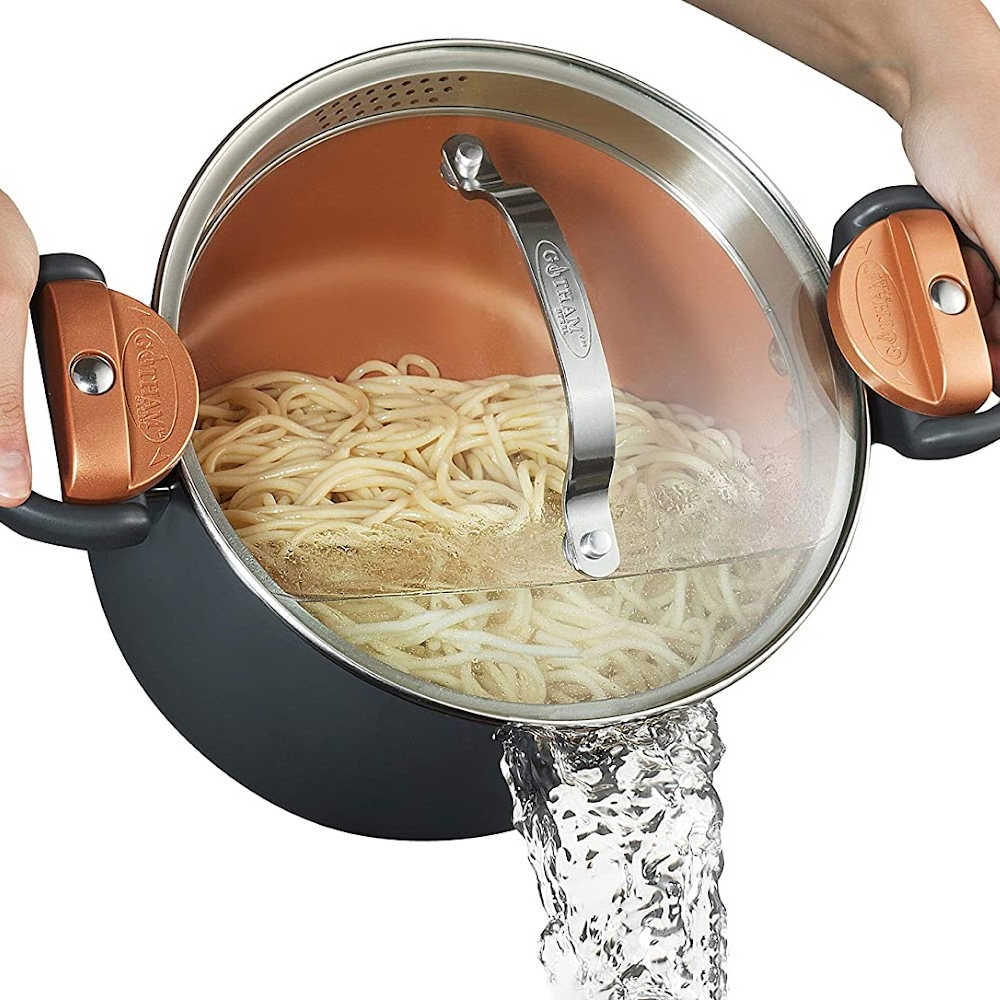
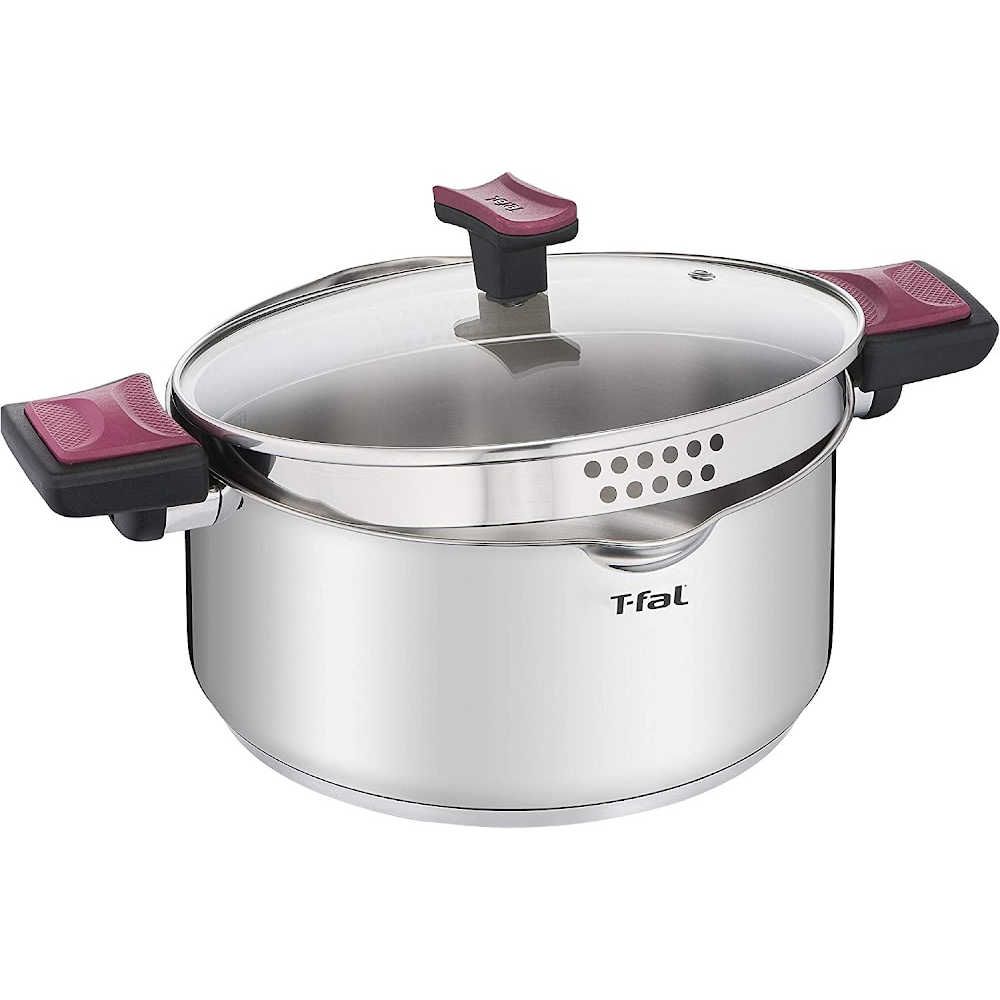
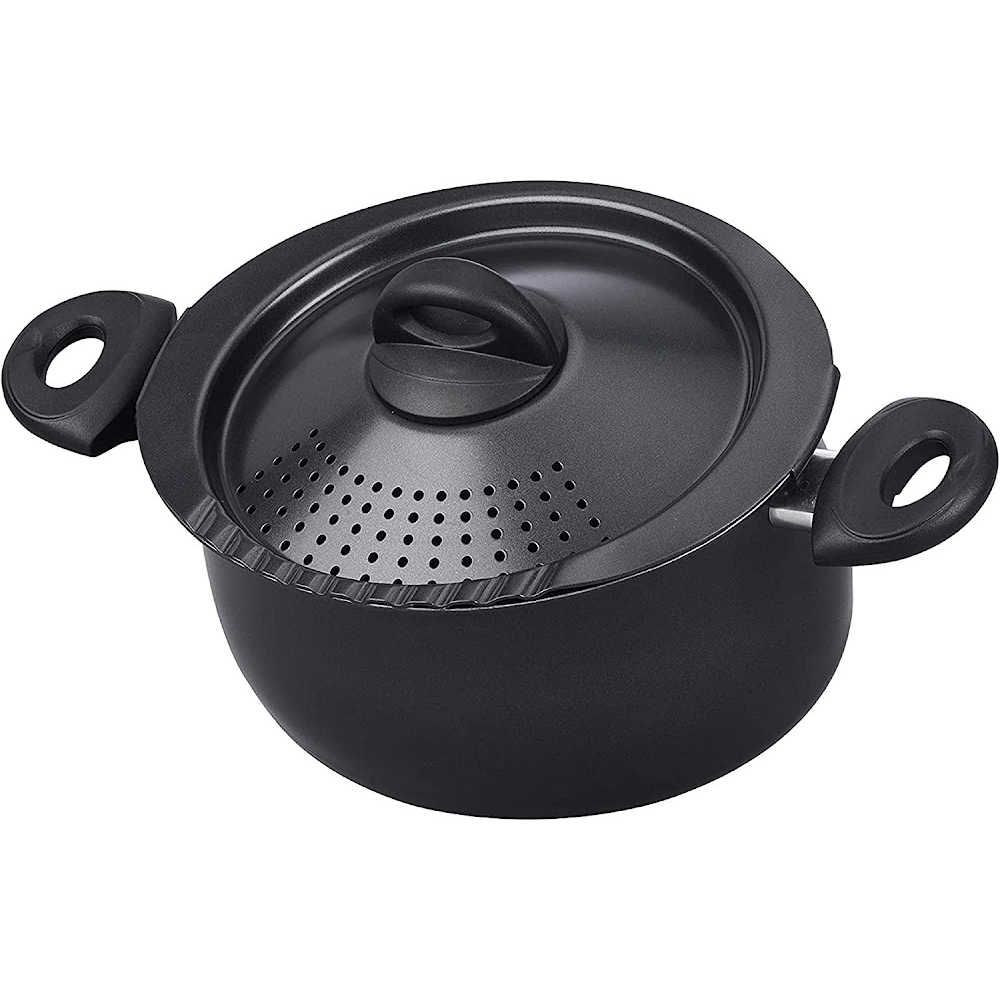
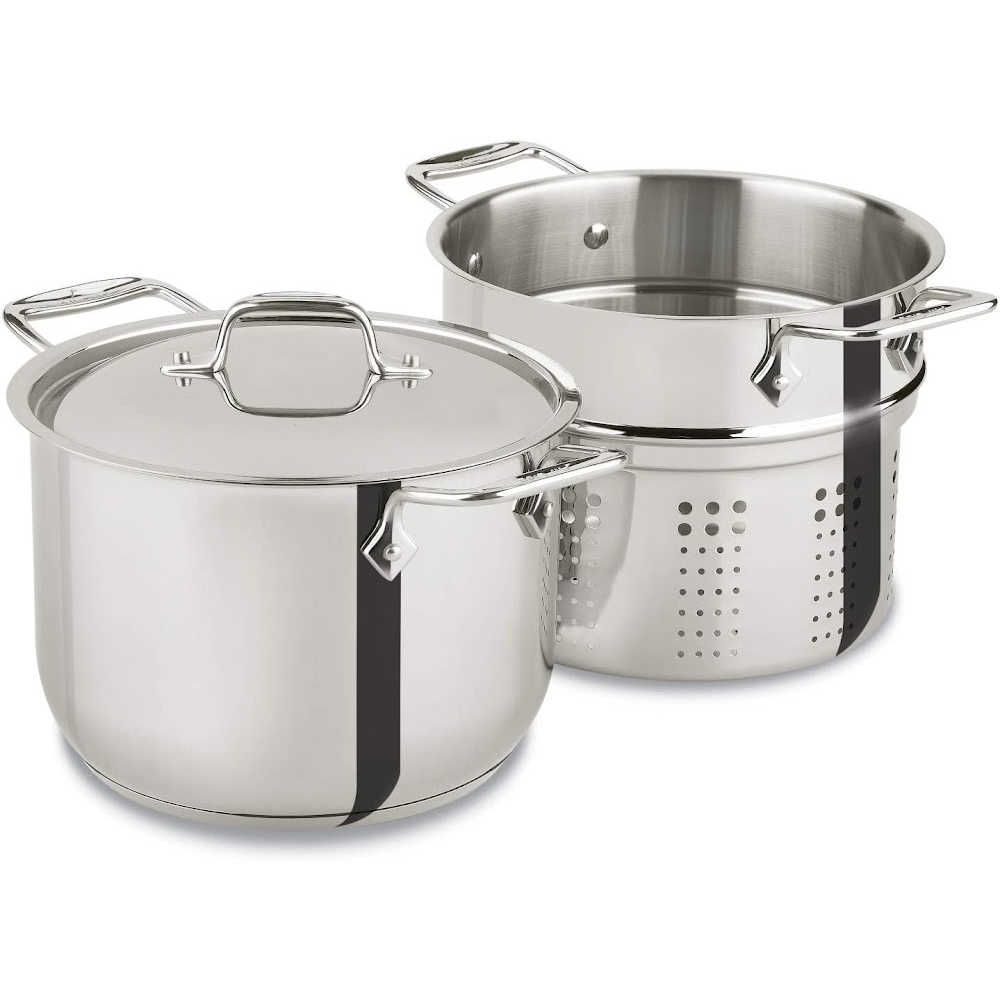
Best Pasta Pot For You
So, which pasta pot is your favorite? We’d love to know.
Be sure to check out our other blog posts for reviews on other kitchen appliances like blenders and food processors. And as always, thanks for reading!
Catchy Finds
